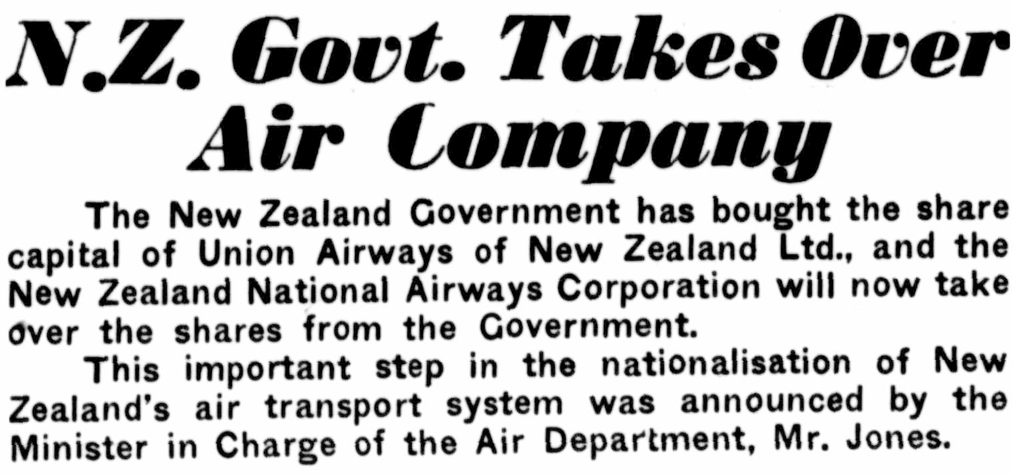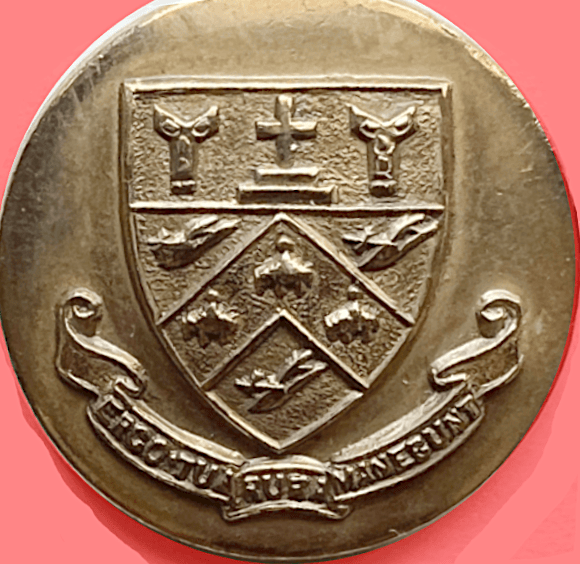Table of Contents
New Zealand Button History

?Sporting team blazer uniform button. No backmark.
Information for this page were in large part sourced from New Zealand’s National Library’s resource, ‘Papers Past’: https://paperspast.natlib.govt.nz/
I also found these useful:
http://studylib.net/doc/7569817/pinz-history—plastics-new-zealand
http://www.nzfashionmuseum.org.nz
The history of button manufacturing in New Zealand followed a similar course to that in Australia. Total reliance on imports gave way to local manufacturing and even exporting. Finding value from the waste products of the county’s growing meat and diary industry, buttons were made from teeth and bones, and casein was exported.
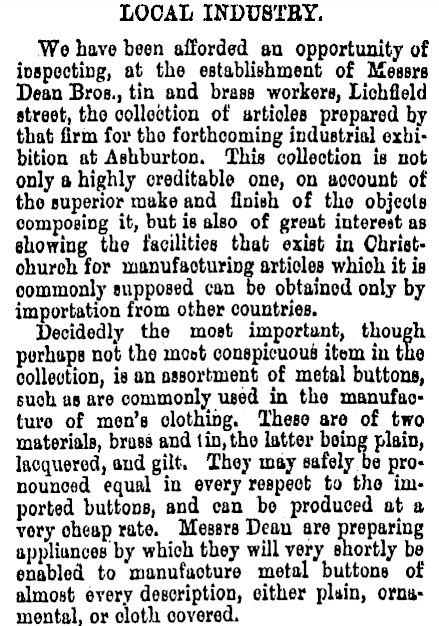
Star (Christchurch), 22nd March 1881 page 3.
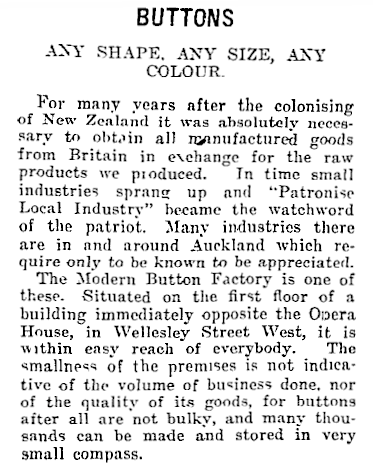
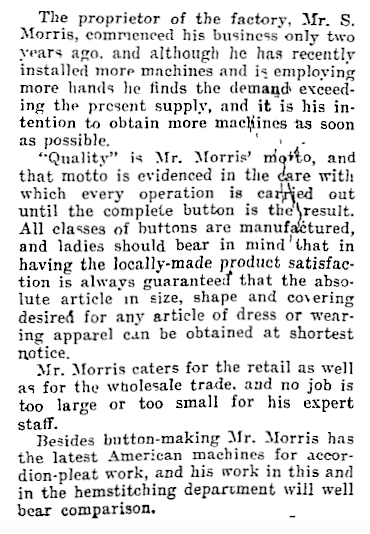
Published Auckland Star, 20th December 1919. The Modern Button factory made fabric covered buttons from 1917-1926. They were also tailors.
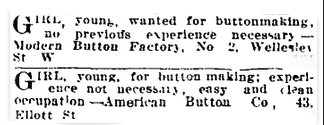
Wanted ads for two button factories, in the Auckland Star, 1920.
In 1939 in the suburb of Petone, Lower Hutt, a company called the American Button Company started manufacturing fashion buttons. Reportedly, before this factory opened there had not been a significant local production. From the article below it seems likely that the ‘American Button Company’ was making covered buttons:
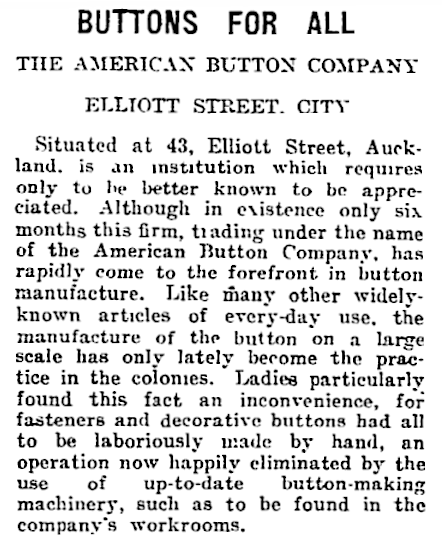
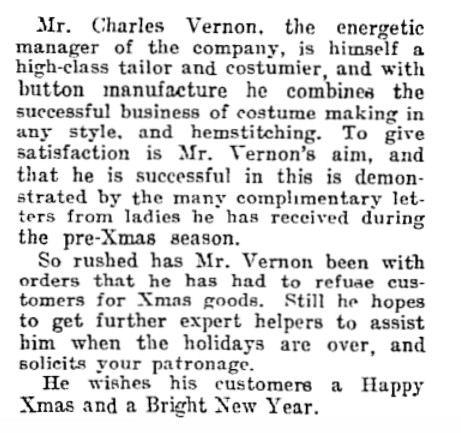
Auckland Star, 23rd December 1919. The firm stopped advertising in 1920.How you gonna keep them down on the farm? Well, it wasn’t just Broadway pulling the young folk away, there was also the chance to sew buttons!

The Daily Telegraph (Brisbane), 5th November 1941 page 6.
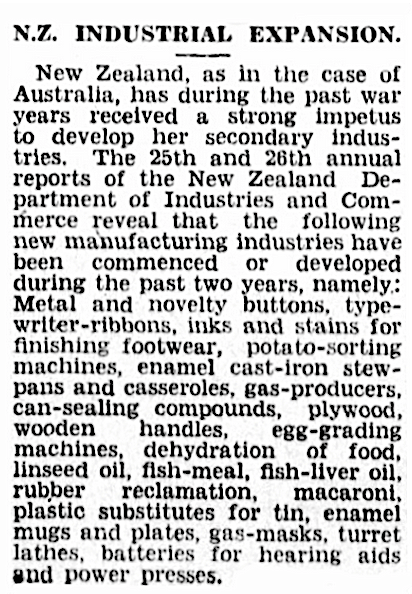
Daily Mercury (Mackay, Qld), 4th October1943 page 4.
Major world events had local impacts. The New Zealand plastics industry made major contributions during WW2, producing large quantities of buttons for uniforms as well as millions of toothbrushes! In 1945 it was reported that the entry of Japan into the war had meant the loss of New Zealand’s main supply of pearl buttons. The local fresh-water mussels and trochus shells were reportedly of no commercial use, and supply from India was insufficient. This changed demand from pearl to plastic buttons, locally made as well as imported from the USA and Canada. Post war, world-wide shortages of supplies prompted charity efforts like that below;

Published in the Auckland Star, 21st March 1945.
There were two major plastic button producers, described following:
British Buttons and Buckles/General Plastics: Pluckett Avenue, Petone
1939-1950
Initial shareholders included A.G. Griffiths, O. C. Rheuben and N. R. Rheuben, who were involved in button manufacturing in Australia (O.C. Rheuben & Co, which would become ‘General Plastics’ in 1941). This New Zealand company was also renamed General Plastics around 1946. Headed by Jack Quinn, it produced Beauclaire branded buttons. The buttons were made by compression molding, pressing of slugs, and later injection molding. At one stage the company employed 70-80 people and was exporting container loads of buttons.
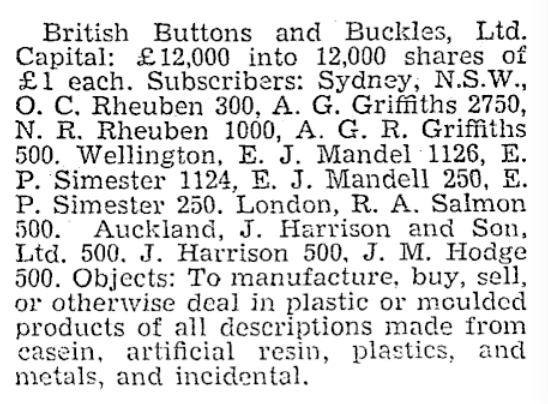
Evening Post, 31st July 1939.
The factory started production at the end of August 1939. In November it was reported in the Evening Post that “The new factory already employs 50 hands and it is expected that the staff will increase to 70 when full production is attained. Already the company has delivered nearly 10,000 gross of buttons and it is contended that it can produce 1000,000 gross per annum”. It was not making men’s buttons or pearl buttons, rather women’s fashion buttons.
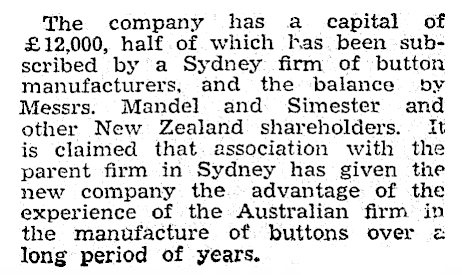
Part of the same news report. It shows that O. C. Rheuben had at that stage a 50% interest in the company.
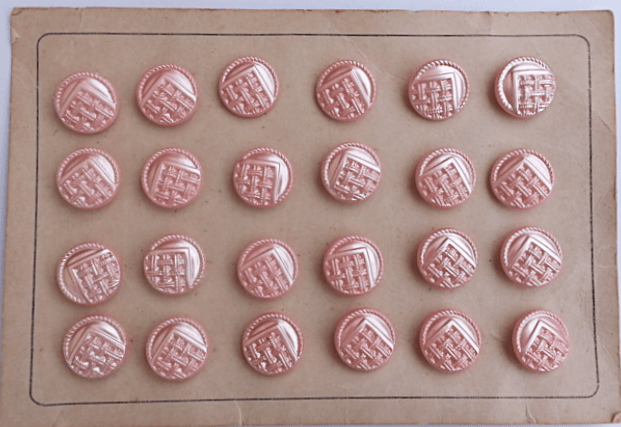
Unmarked, however these are definitely GP designs.


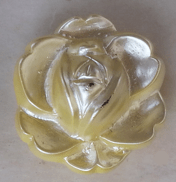
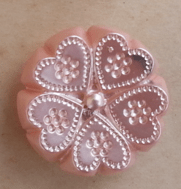
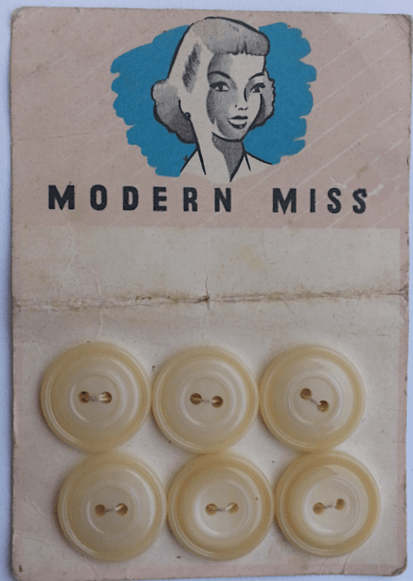
Probably pre-Beauclaire branding. This “Modern Miss” graphic varies from the Australian versions, but like in Australia, came from this company.
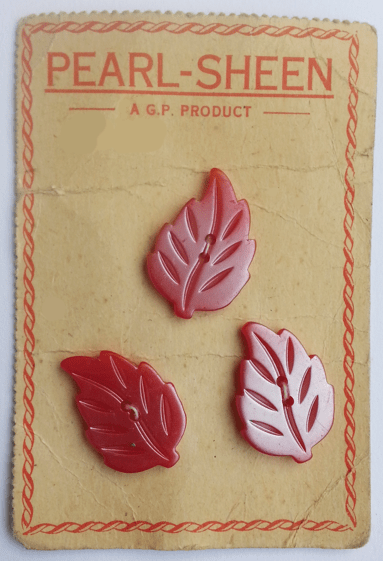
Post 1945 (GP branding). This design appears on Coronet cards in Australia. They date around 1949, as seen in the advert below.

Otago Daily Times, 29th November 1949 page 11.
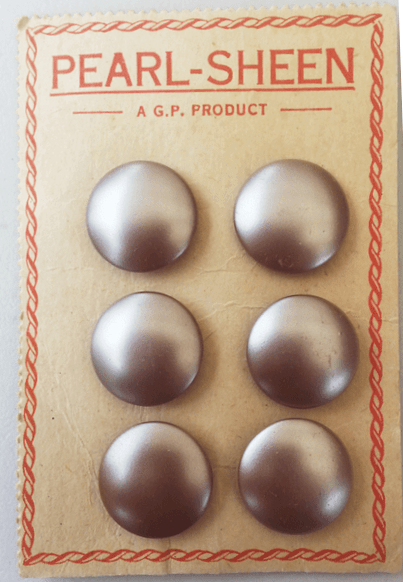
“G.P. stands for General Plastics Ltd.
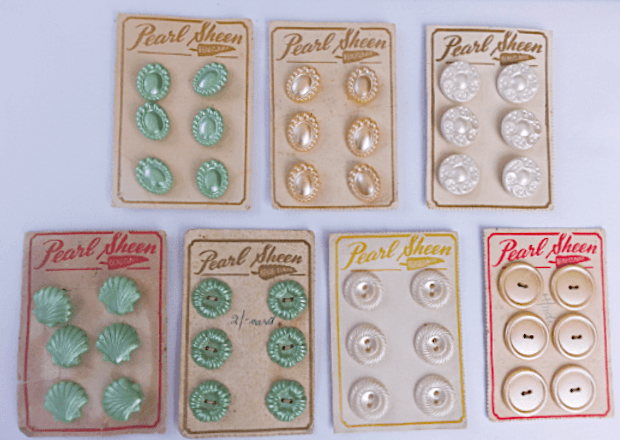
‘Pearl Sheen’ branding (not seen in Australia). The name Beauclaire appears in a leaf shape.

‘Pearl-Glo’, also a branding not used in Australia.
From the designs of cards and buttons it is evident that there was some sharing of design and marketing strategies, but also some independence. It is possible the name Beauclaire originated in New Zealand, before a standardising of the marketing in the two countries, and was actually Belle-claire before it became Beauclaire (see below). Ads for ‘Pearl Sheen’ buttons appeared in 1949-50 newspapers.
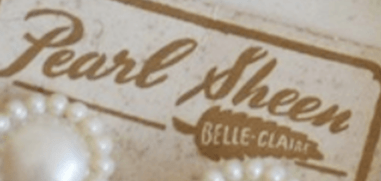

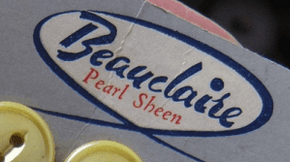

Note the change from “Belleclaire” to “Beauclaire”. I bought these locally, but they probably came from NZ.
Beauclaire 1950s
As in Australia, at first the pale blue Beauclaire cards had no text in the lower oval, and the backs were completely blank.
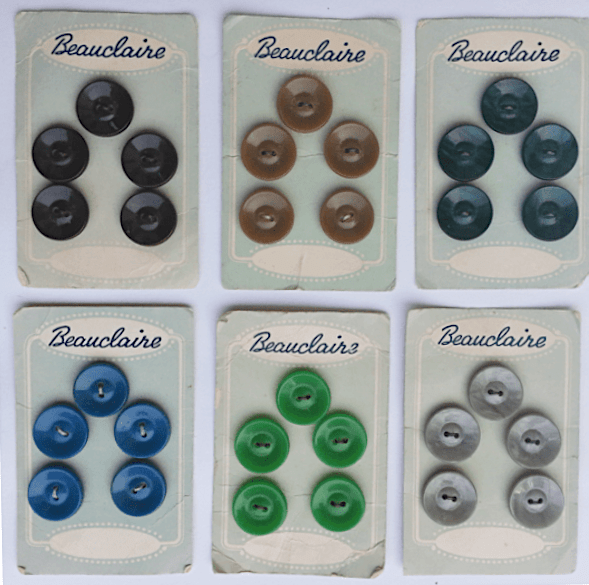
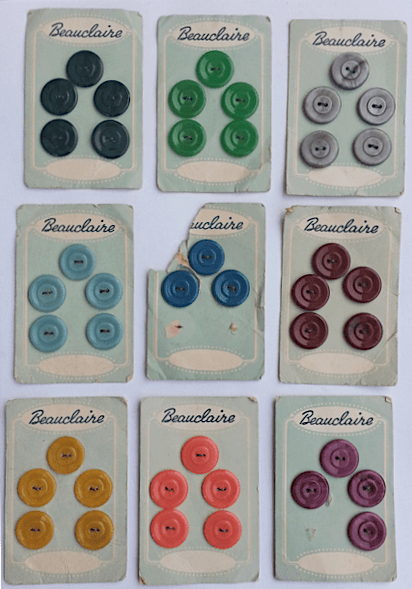
Then printing at the bottom, and on the back occurred (identical wording except for the country’s name).
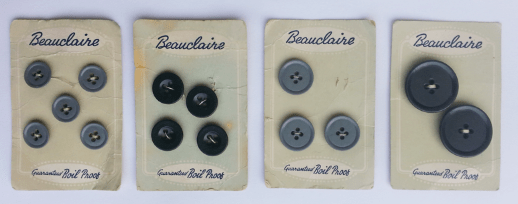
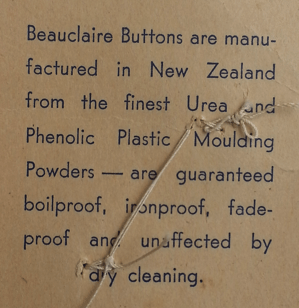
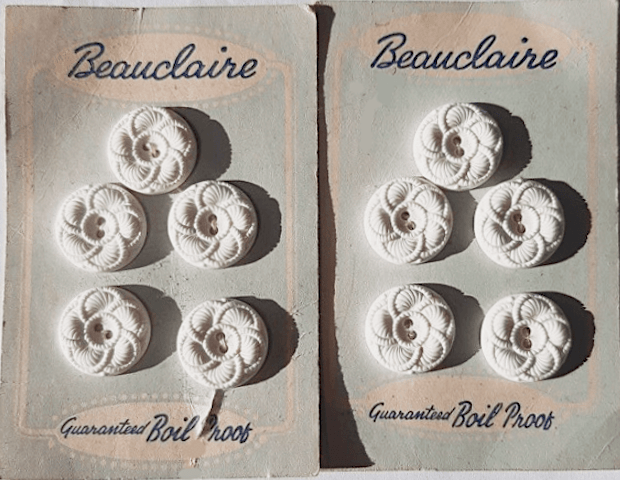
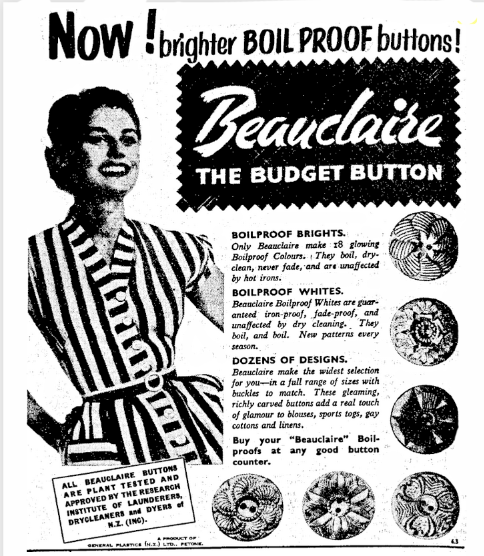
Press, 15th February 1955 page 16. Note the button on the lower left is seen on the above card.
A bit of a mystery: Beauclaire cards, but the G. Herring concept of cardigan buttons with a backing disk and a different brand name, Astoria. Who had copied whom?
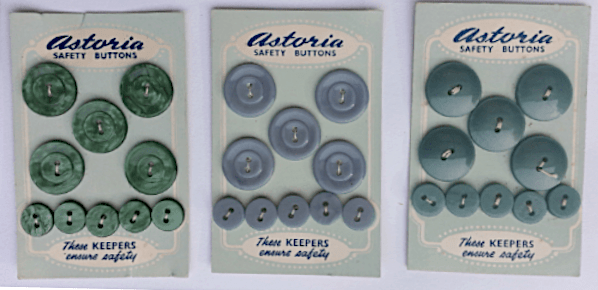
“These keepers ensure safety.”
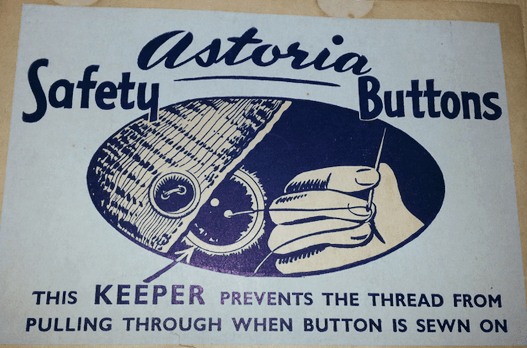
A counter-top display box of Astoria buttons:
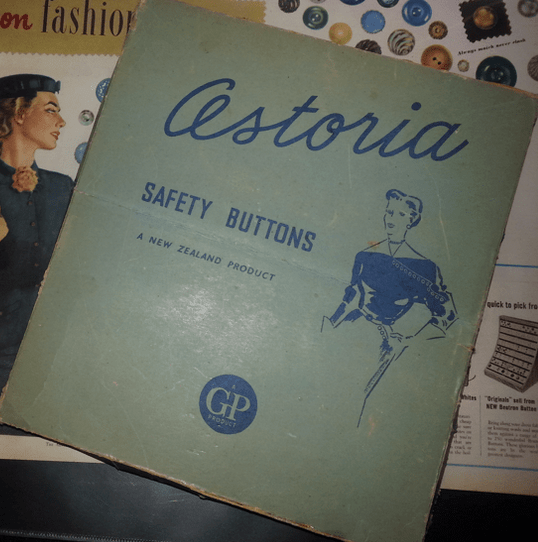
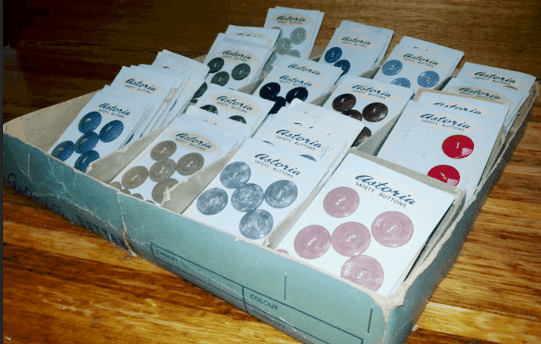
The artwork changed, circa 1953. Boilproof and Moonglow branding appears.
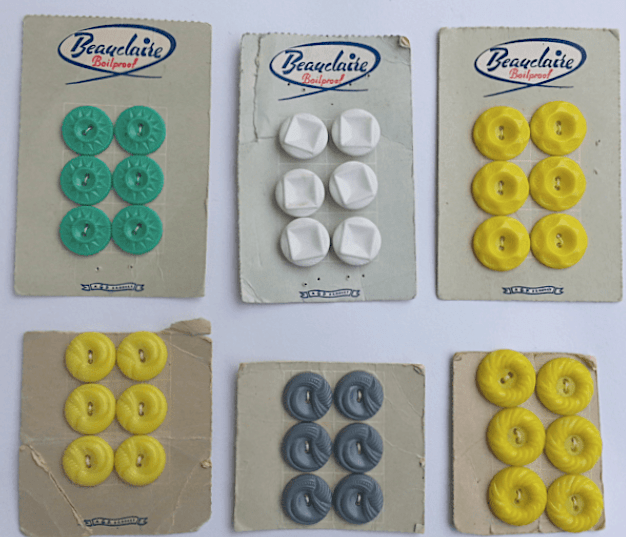

These ducks have been sold in Australia and NZ for decades.
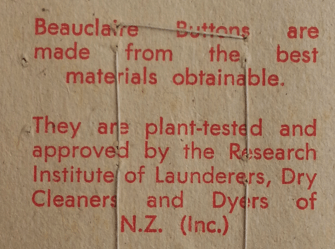
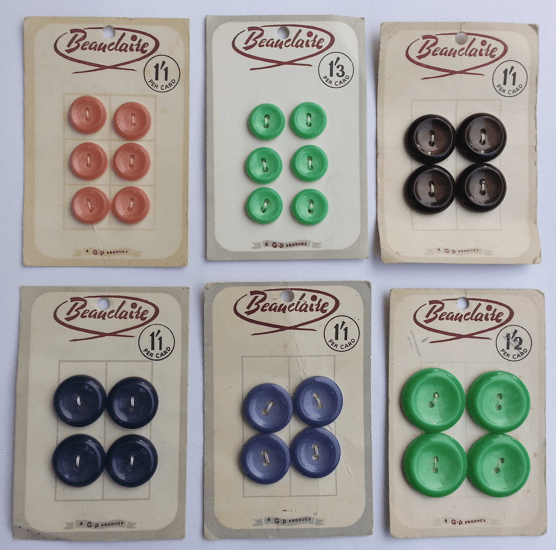
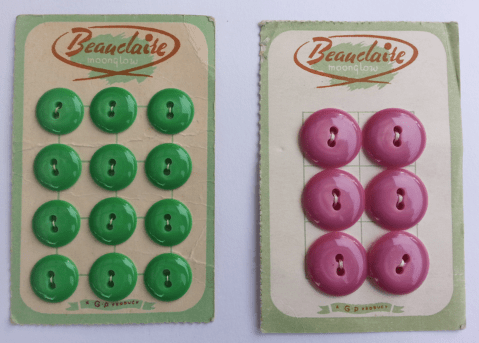
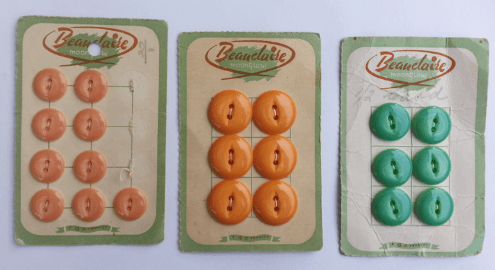
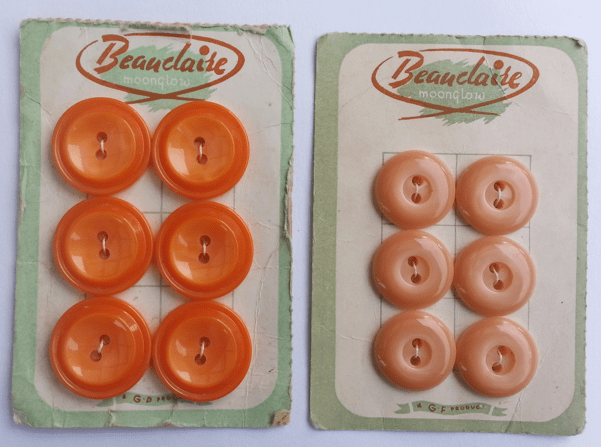
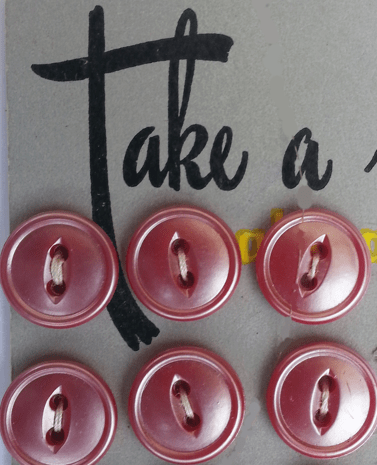
Mid 1950s partial card.
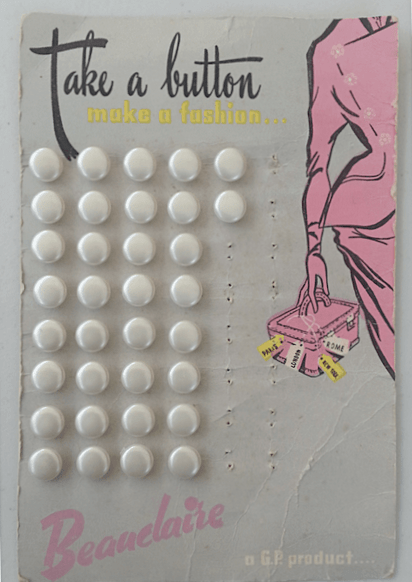
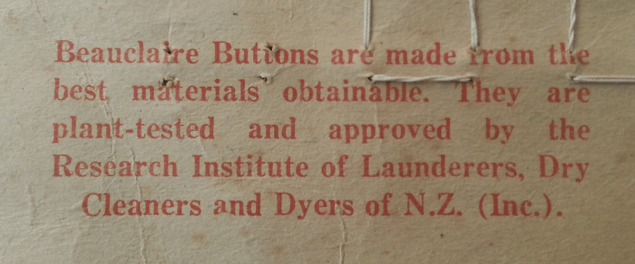
On the back of the above card.
Late 1950s-1960s
Different artwork appeared in the late 1950s, when the branding transitioned to Leda.

Press, 16th May 1958 page 15. The brand “Beauclaire” lasted in NZ at least 1967.
Small cards
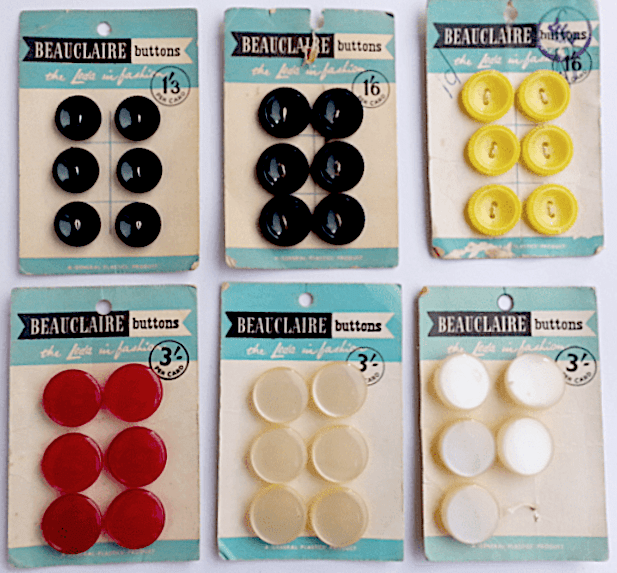
Beaclaire Buttons, “the Leda in fashion”.
A “innovation” that was patented here was to punch out holes in the cards, and attach the buttons with sticky tape. I don’t feel this was a great idea! This method was mentioned in the news in 1954.
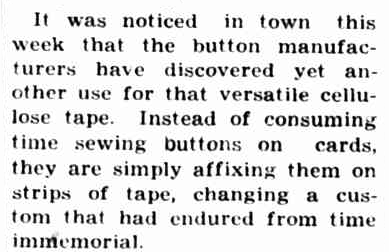
The Riverine Grazier (Hay, NSW), 3rd December 1954 page 2.
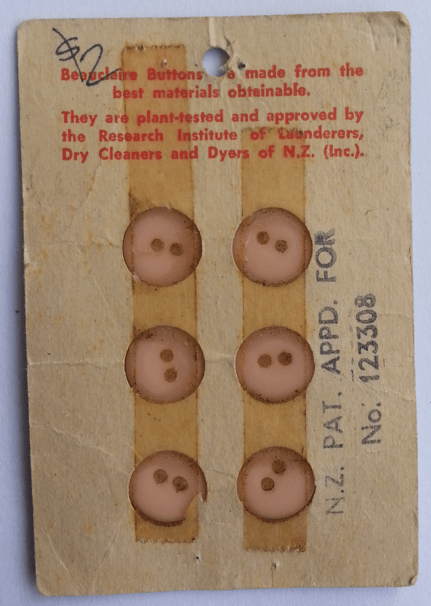
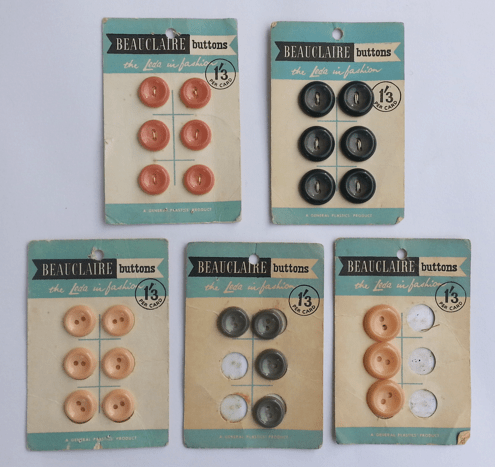
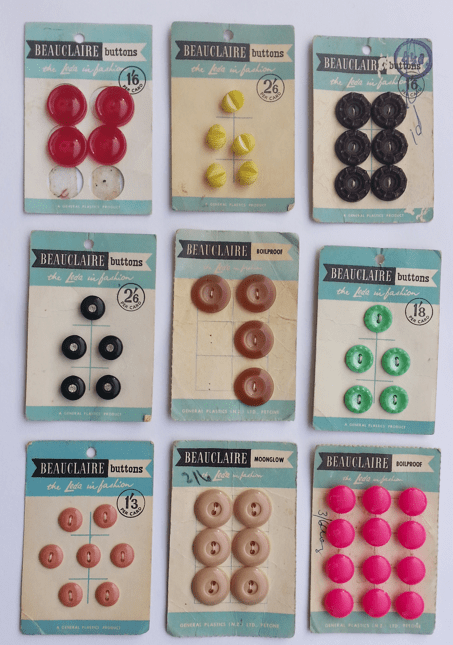
Large cards
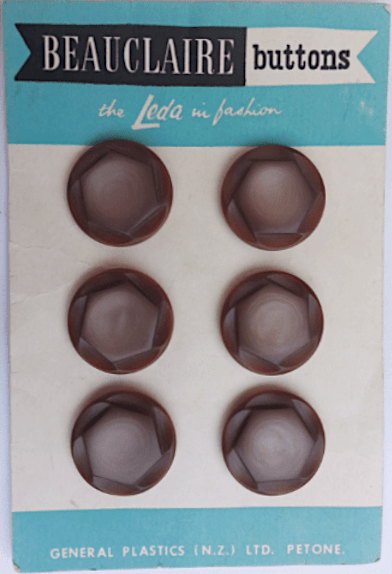
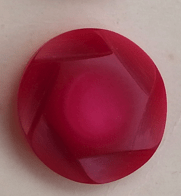
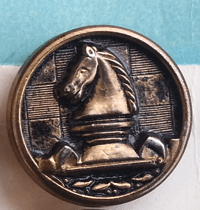
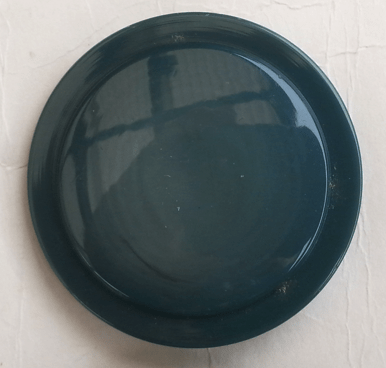
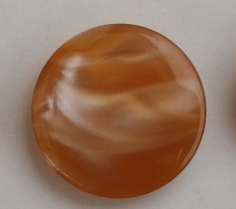

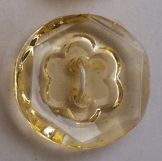
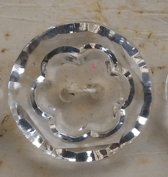
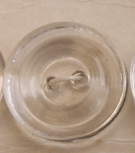
Ryders branding on Beauclaire cards
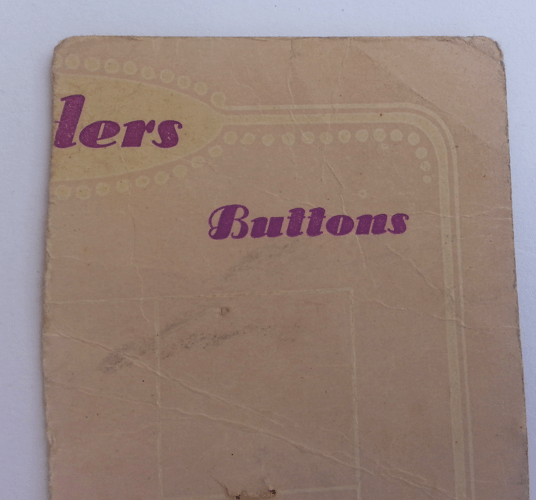

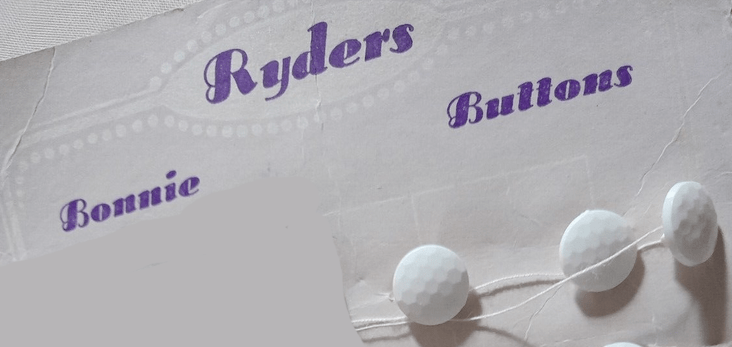
In “Trove” there were a couple of references to clothing made by “Ryders” in 1950-1, which is the right era. General Plastics must have carded these buttons for a clothing manufacturer.
Sample Cards

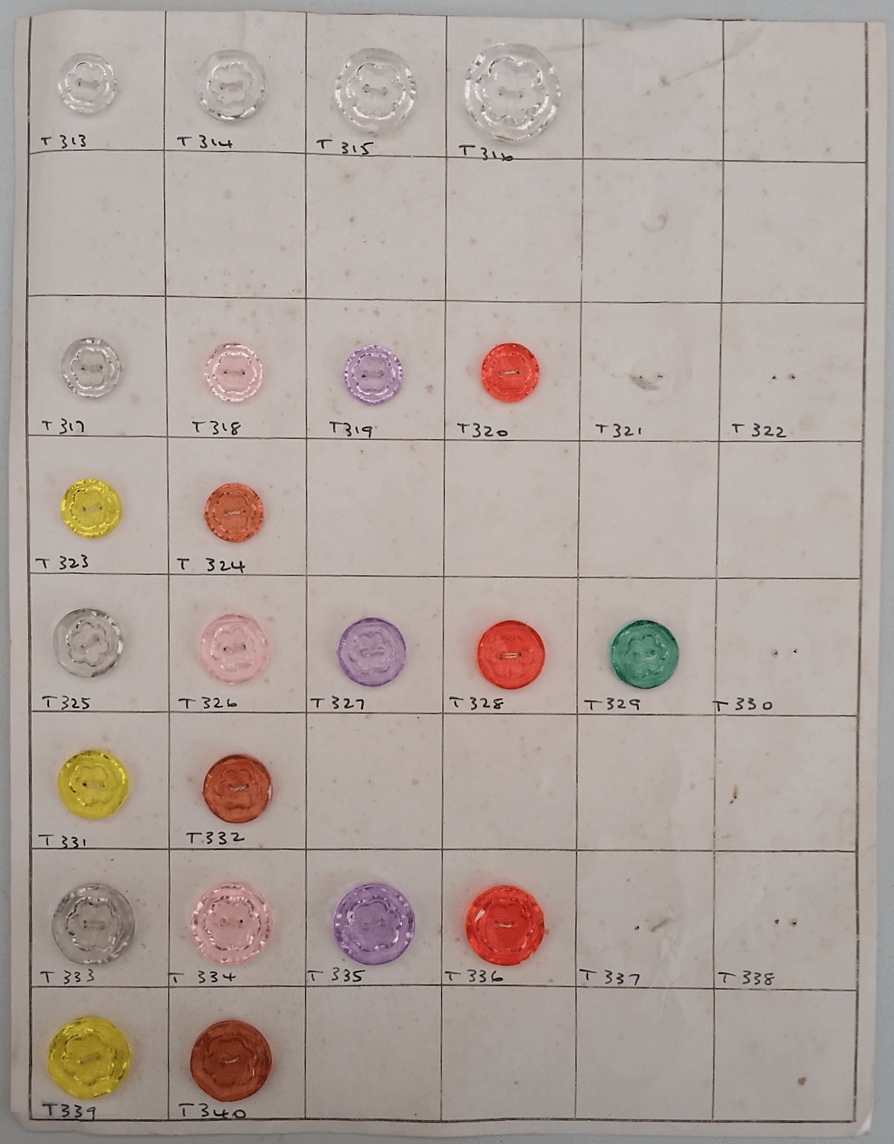
1965 onwards
On 13th April, 1965, an electrical short circuit initiated an exposition of plastic dust which had accumulated below floor boards in the factory in Masterton. The explosions was so massive that a 300kg piece of machinery was thrown onto the roof. Four people were killed, six were injured, and it would have been worse had not most of the staff been on a tea break.
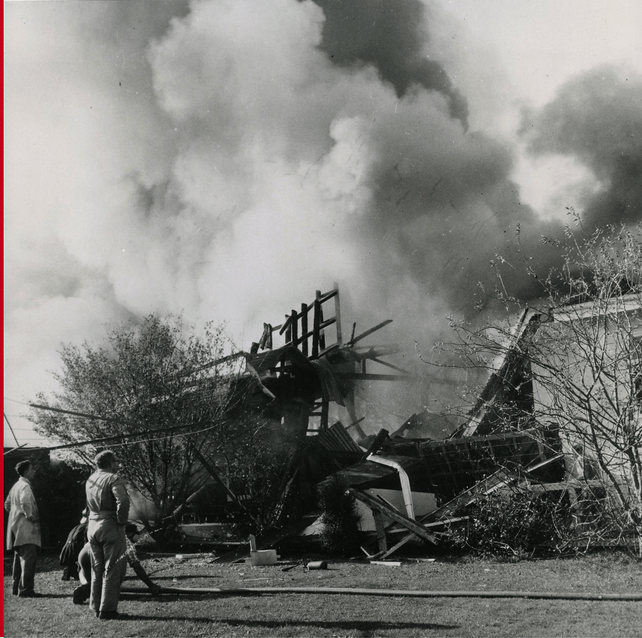
From Archives New Zealand. 13th April 1965.
The company became New Zealand Casein Plastics Ltd in 1969. In 1988 a joint venture was formed with New Zealand Dairy Co. and a Japanese company, Nissei Kyoeki, to manufacture casein buttons for the Japanese market. This venture only lasted two years. The company wound up in 2004/5 as competition with cheaper polyester buttons as well as a rising NZ dollar against a sluggish Japanese economy took its toll. The final seven workers were laid off.
Buttons (N.Z.) Ltd./Falcon Plastics, Newmarket, Auckland
Joseph Henry Faulconbridge (1800 – 1955) was involved in clothing production. In 1934, working from his backyard and with only a few pounds capital, he started a button factory producing wood and pearl buttons. In 1936 he listed Buttons (New Zealand) Limited with his sons Roy and Ian, and expanded production to cast resin, casein and compression molded plastic buttons in Auckland. The company became Falcon Plastics after 1945, with Ian as production manager and Roy as managing director. They produced items such as kitchen ware as well as buttons.

Auckland Star 30th December 1936.
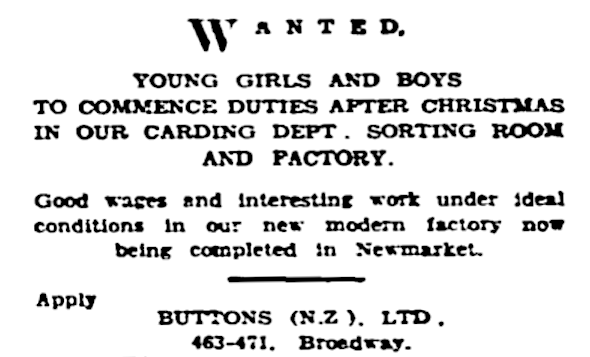
Auckland Star, 18th December 1940.
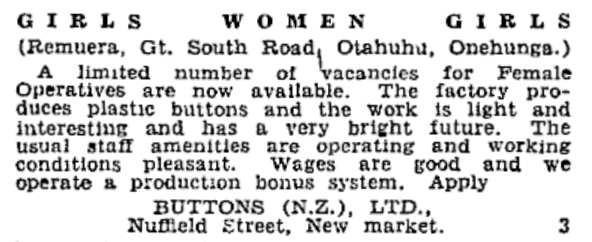
Auckland Star, 3rd November 1945.
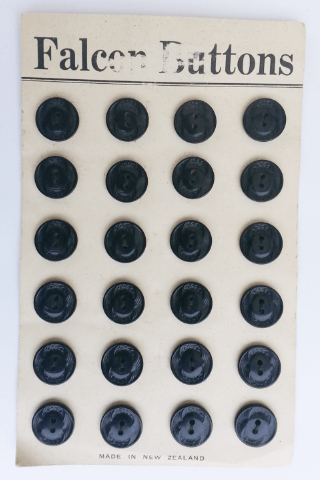
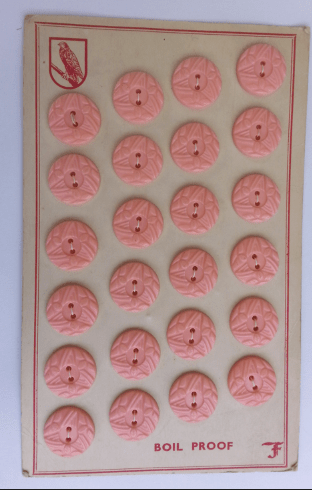
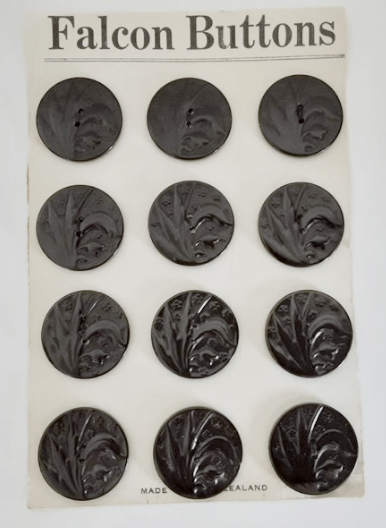

Duraware manufactured by Falcon Plastics. The Falcon trademark Seen below) appears on one of the button cards.
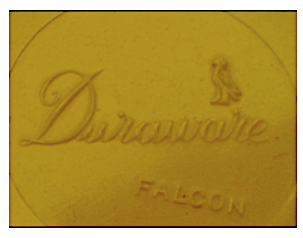
G. Herring/Beutron(Australia)
Around 1956 G.Herring opened a factory. For some reason the names ‘Titan’ and ‘Beauty Buttons’ and ‘Vogue’ were used before changing over to Beutron. The larger Titan cards are direct copies of Australian Beutron cards. Perhaps G. Herring exported to New Zealand under these names before manufacturing locally?
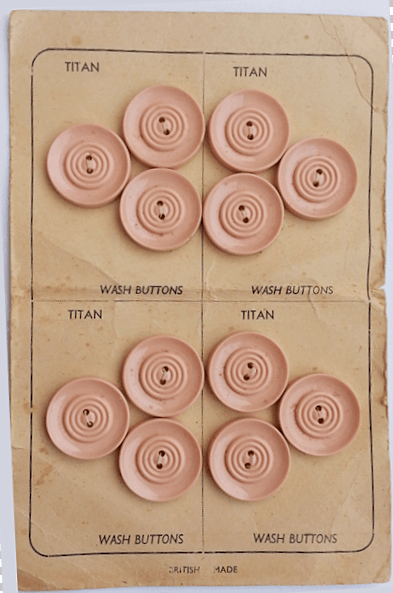
These are identical to ‘British made Beutron Wash buttons’.
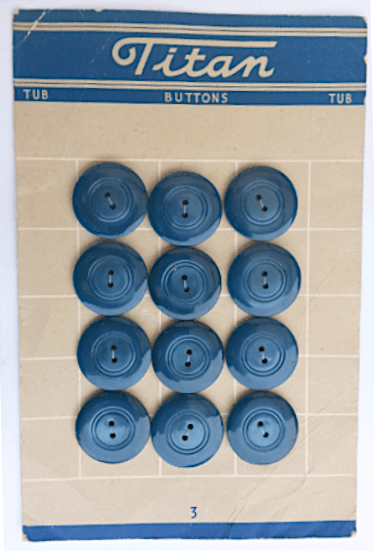
Identical to ‘Beutron Tub buttons’.
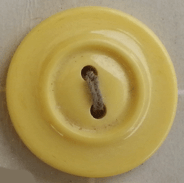

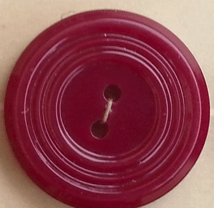
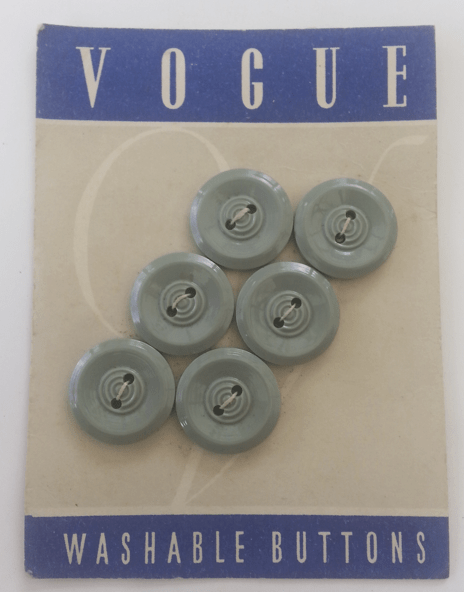
The buttons are the same as Beutron Tub or Wash buttons of the era.
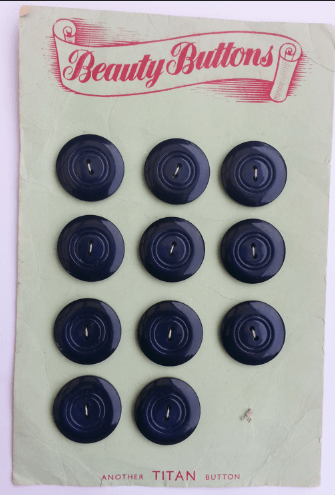
Note that ‘Beauty buttons’ were ‘another Titan button’.
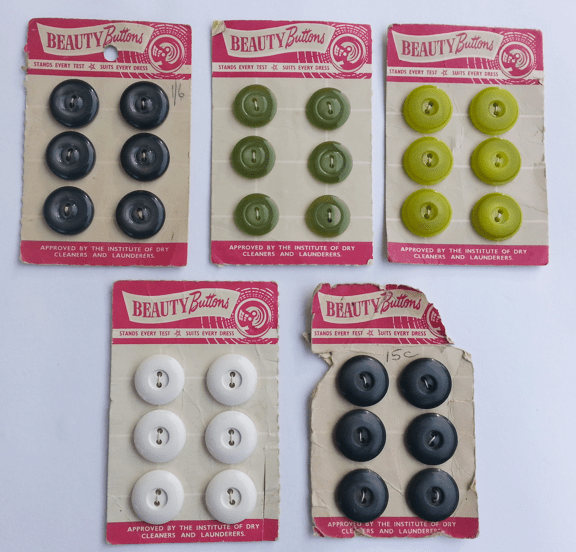
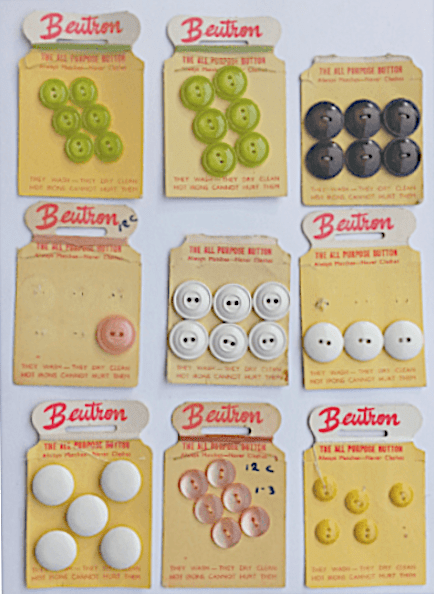
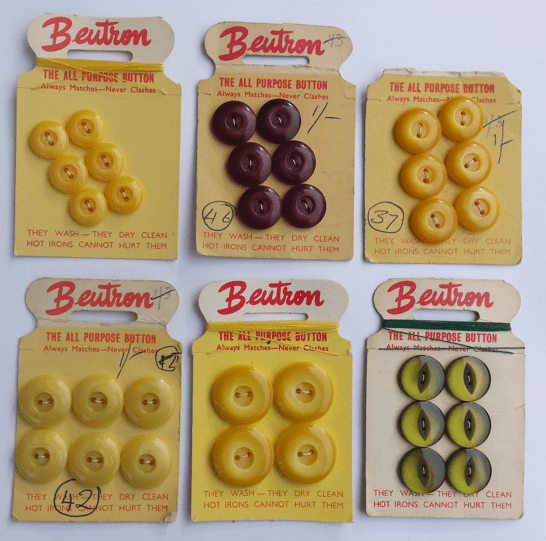

On ‘boil tested white’ cards!
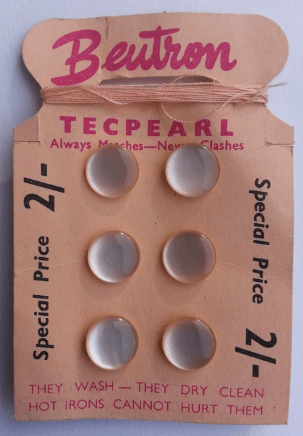
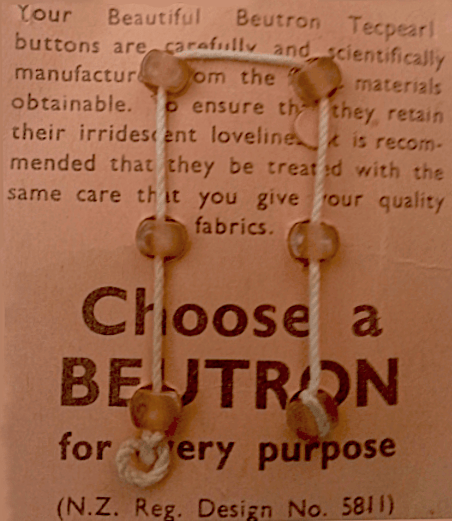
The card style below was not seen in Australia.


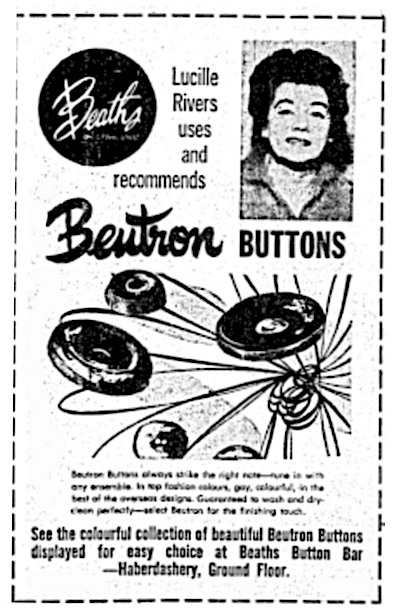
Press, 30th October 1961 page 7.
Re-order cards
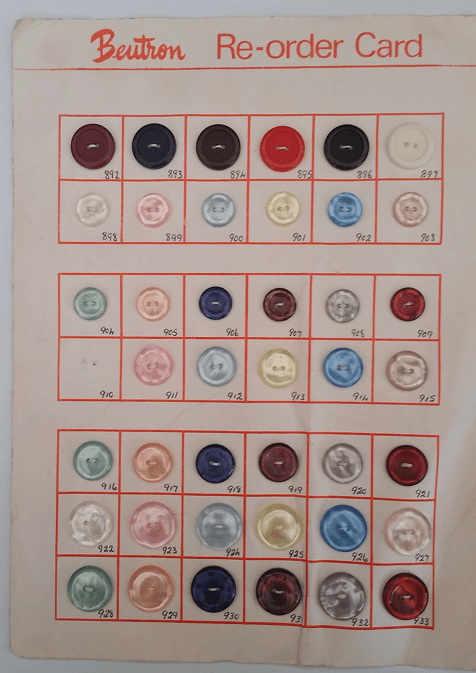
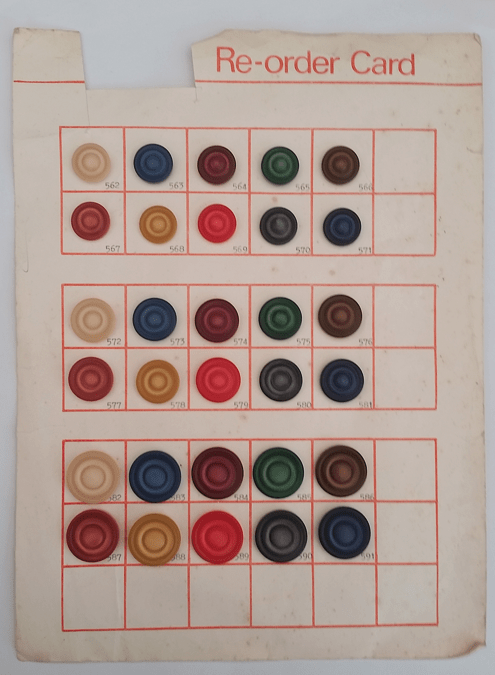
Minor Manufacturers/ Tailors Buttons/Distributors
A. Levy Ltd., Wellington
Abraham Levy (1861-1918), tailor, was supplying uniforms from at least 1913. In 1916 he was in trouble. Apparently he used cotton instead of linen thread!
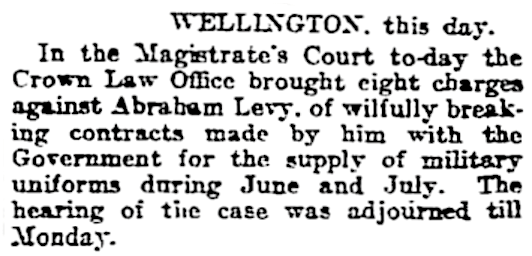
Auckland Star, 25th August 1916, page 3.

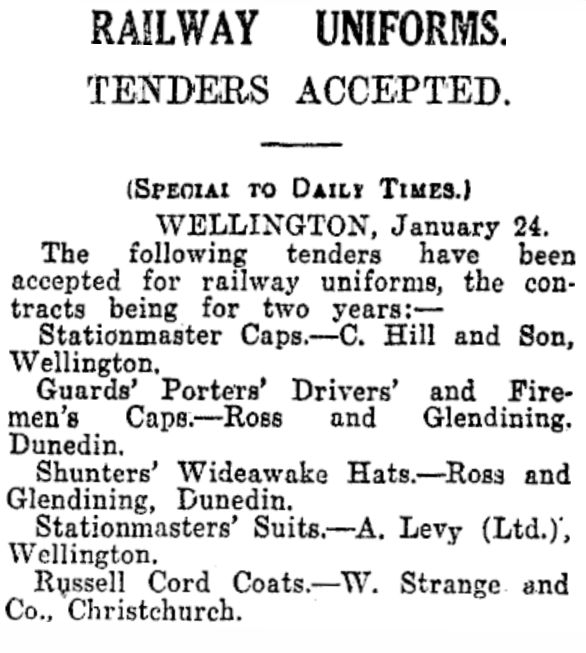
Otago Daily Times, 25th January 1927. This may date the above NZ Rail button.
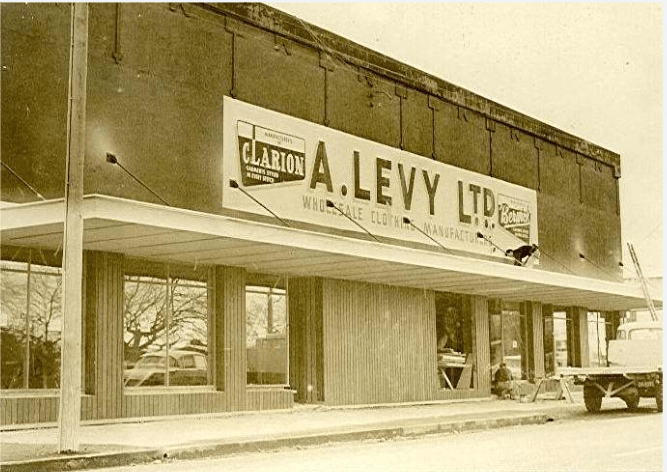
The Levin Building c.1969, built 1936. Credit: “Horowhenua Historical Society Inc.” https://horowhenua.kete.net.nz/item/9e3d0eb0-62e1-49a4-8290-03f5eb0758fb
Ballantyne & Co, Christchurch
John Ballantyne was born in Scotland in 1825. He traveled to Australia in 1852 then to New Zealand in 1871. Arriving in Christchurch in 1872 he was encouraged to take over a drapery firm, Dunstable House that had been established in 1854. The business became J. Ballantyne & Co. in 1920. The company trades today as Ballantynes.
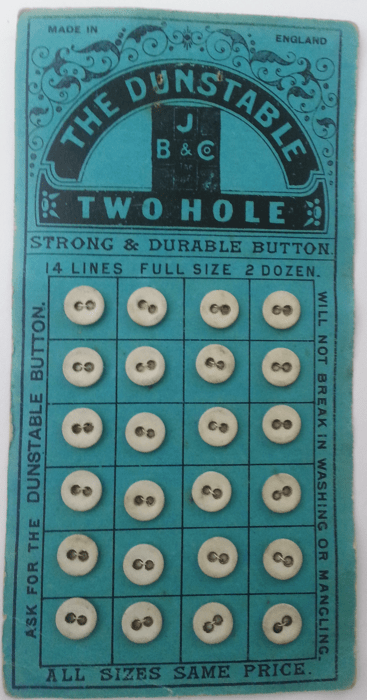
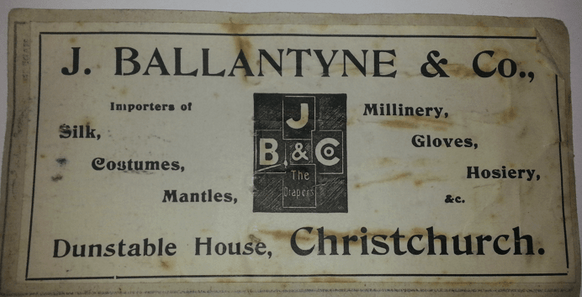
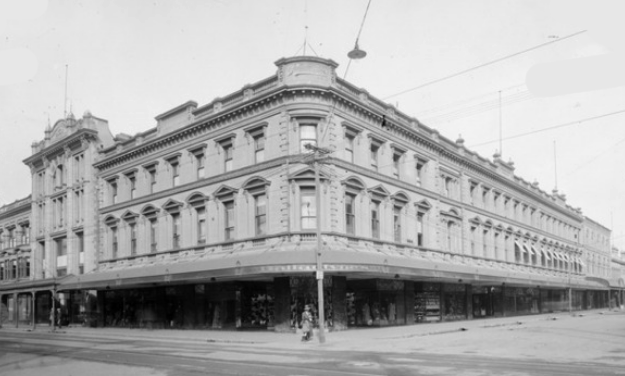
Credit: Ballantyne & Company Ltd building, Christchurch. Ref: 1/1-009721-G. Alexander Turnbull Library, Wellington, New Zealand. /records/29946497 Dunstable House c.1920. It was destroyed in a fire in 1947.
Beath & Co Ltd, Christchurch
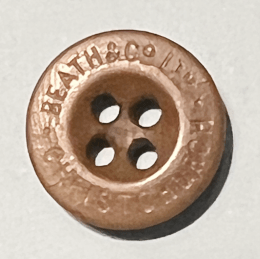
George Low Beath was in partnership with Oscar Kirby from 1866 in Kirby’s menswear store (est 1860). After Kirby retired, Beath took his brother-in-law into partnership, and expanded into women’s wear. It grew to become a large department store. After the partners had both retired, the firm became a limited liability company. In 1977 the firm merged with its neighbour, ‘The Drapery & General Importing Co’ (DIC). The building was damaged during the 2010-11 earthquakes.
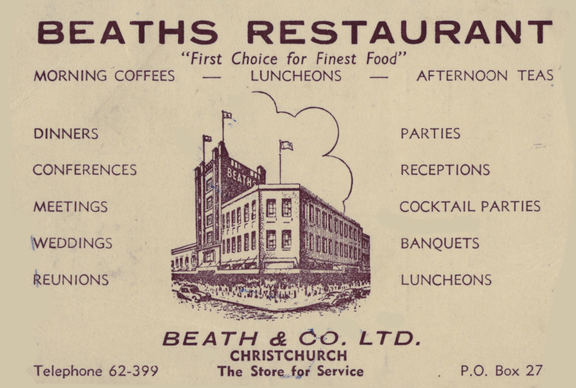
Beath’s card/calendar 1955.
Brown, Ewing & Co. Dunedin

In 1866 Thomas Brown and Ralph Ewing bought a drapery store from Ross & Glendining, calling it “Brown, Ewing & Co”. They were clothiers, drapers and silk mercers. Mr Brown continued the business alone after Mr Ewing retired in 1893, trading under the same name. Due to the growth of the business, the firm rebuilt/moved a couple of times to larger premises. The business may have been sold in 1959.
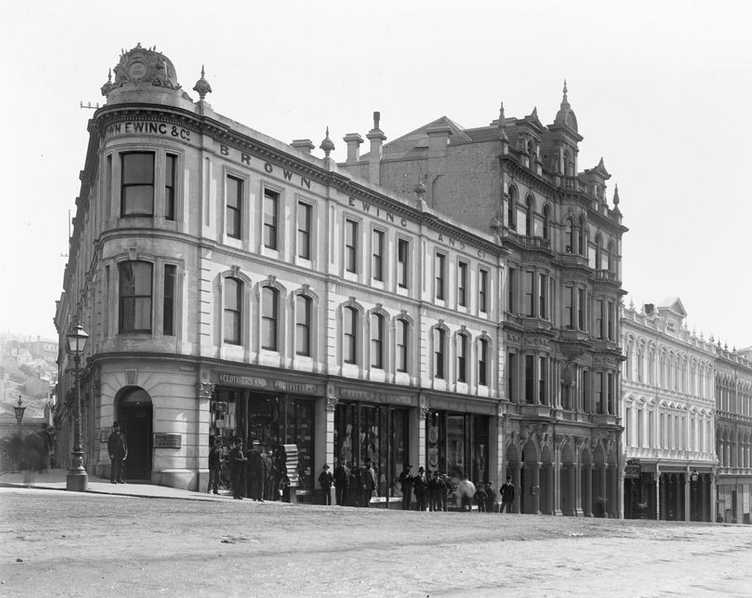
Museum Of NZ, image #C.012311. Brown, Ewing & Co on Princes St. Dunedin.
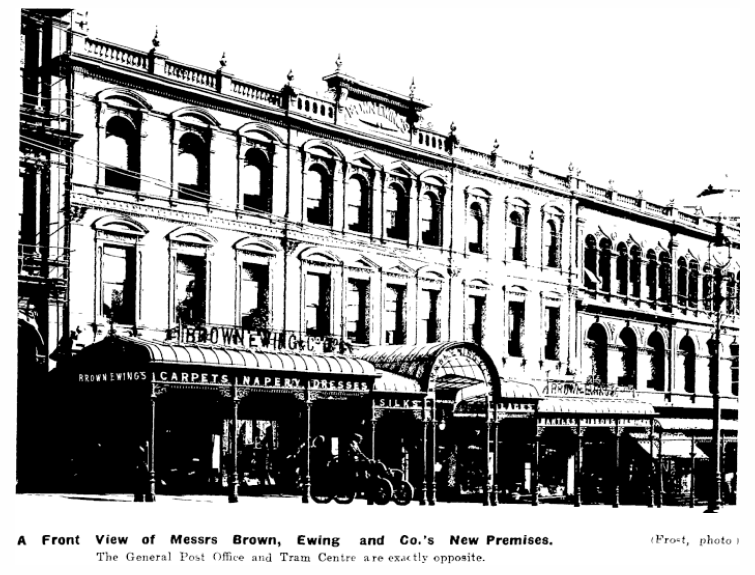
Otago Witness, 29th May 1907 page 43.
Charles Parsons (NZ)/Corozo
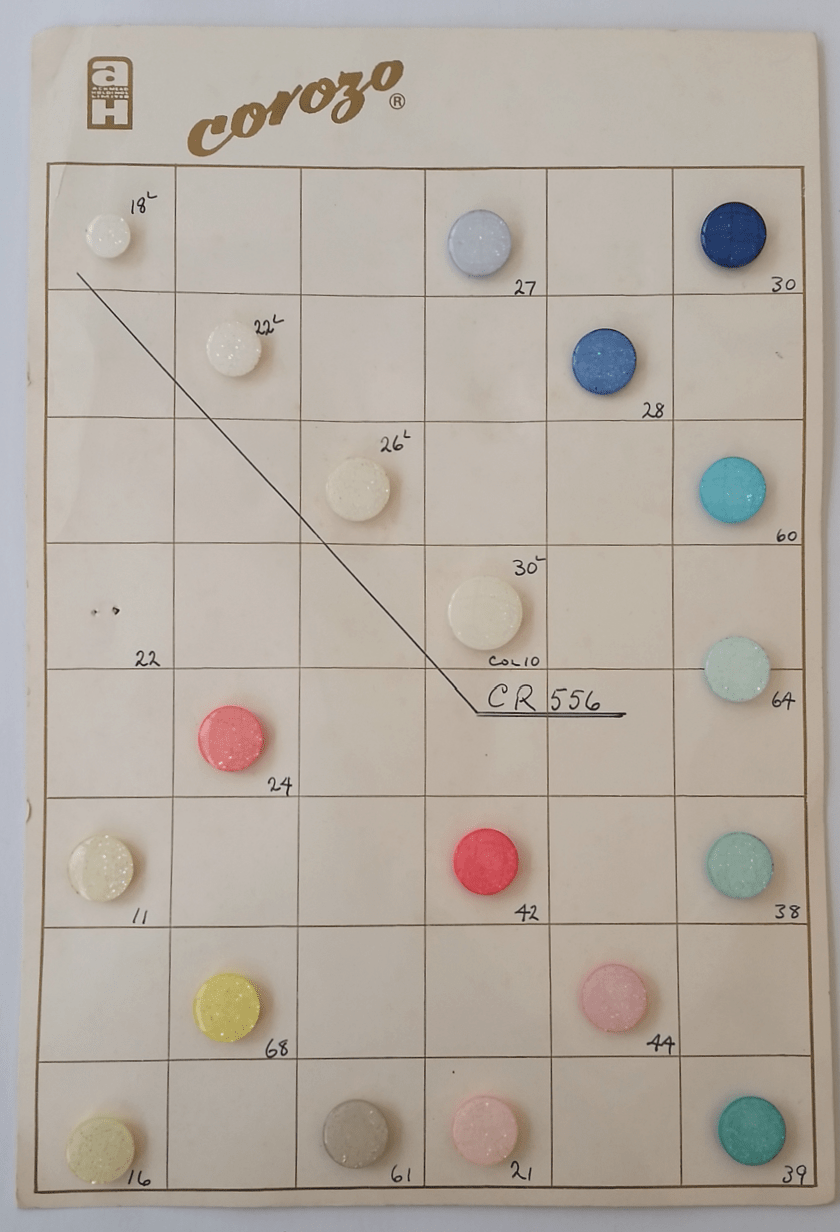
Charles Parsons (NZ) limited was known as Corozo Button Company Limited from 18 March 1955 til 23 February 1966, then Ackmead Holdings Limited from then until 14 June 1993. As this card is marked with both Corozo and Ackmead Holdings trademarks, it perhaps dates to around 1966?
H. B. Craighead Ltd., Wellington
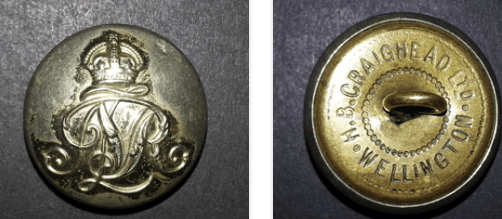
The Craighead family were tailors in New Zealand for several generations. Hugh Clark, Edwin George and his brother William Bruce Craighead were tailors and outfitters in Ashburton on the South Island. It appears W.B moved to Wellington and continued as a tailor. Huia Bruce Craighead was born in Wellington in 1897 so presumably was William’s son. H.B. would also become a tailor and from around 1932 traded as H.B. Craighead Ltd.
Horn Buttons and Accessories Ltd., Wellington
This company started in 1940 and was still advertising for staff in 1945. I don’t know when it folded.

Evening Post, 30th September 1940.
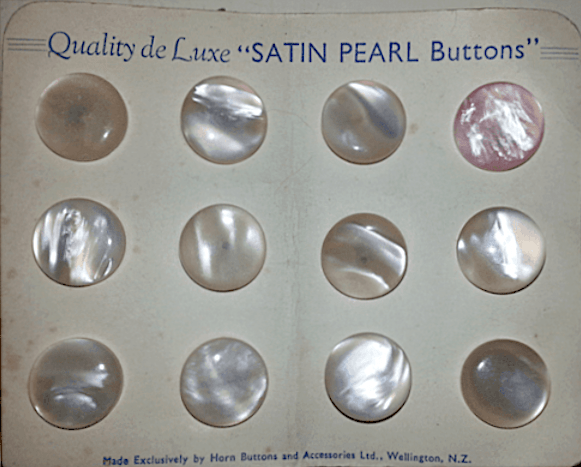
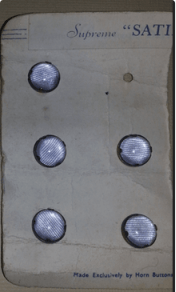
H. R. Thorburn, Palmerston Nth.

Harold Ray Thorburn (1886-1969) purchased the business of Messrs Playle and Thorburn outright in 1919.
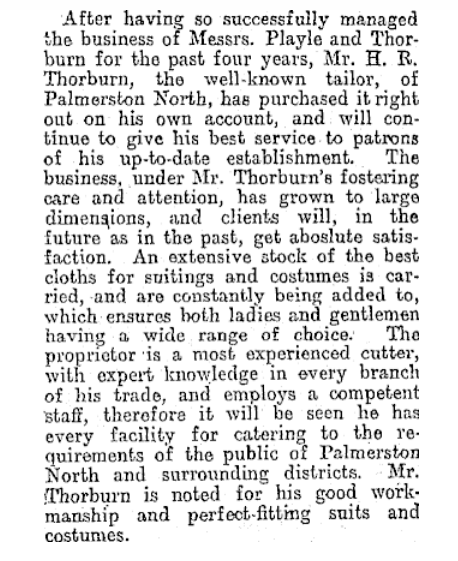
Evening Post, 18th June 1919, page 14.
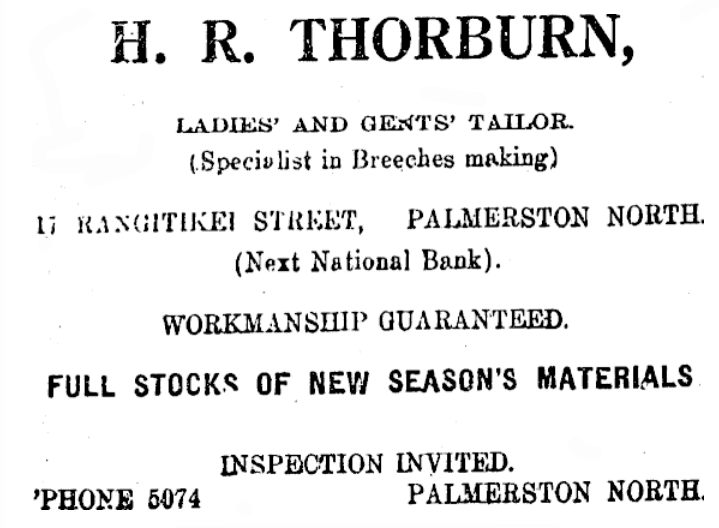
Manawatu Herald, 16th June 1939 page 4.
J. E. Clear, Nelson
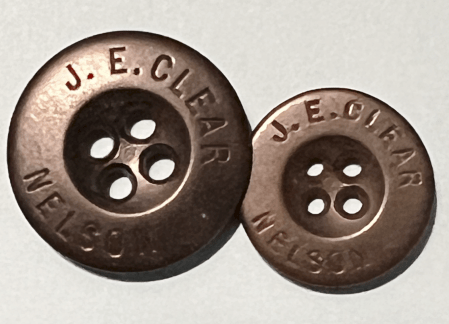
In 1895 Joseph Edward Clear announced he was carrying on the business of the late partnership of ‘Clear & Levien’ on his own in bridge Street, Nelson. He died in 1942.
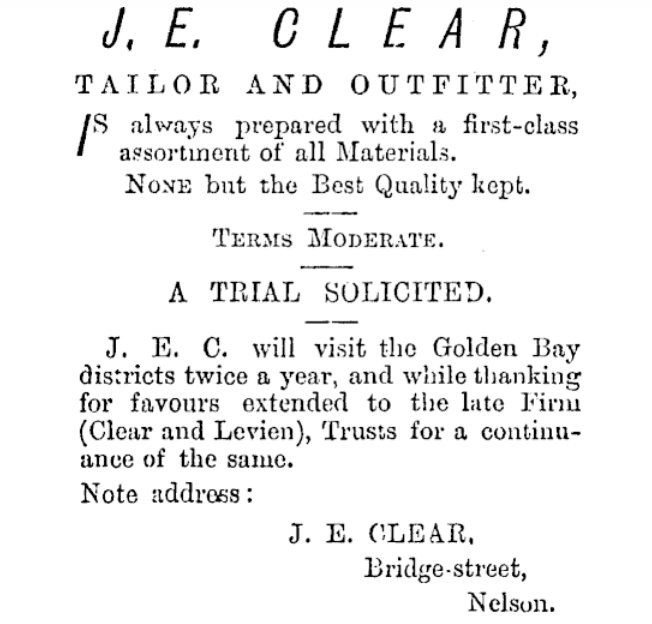
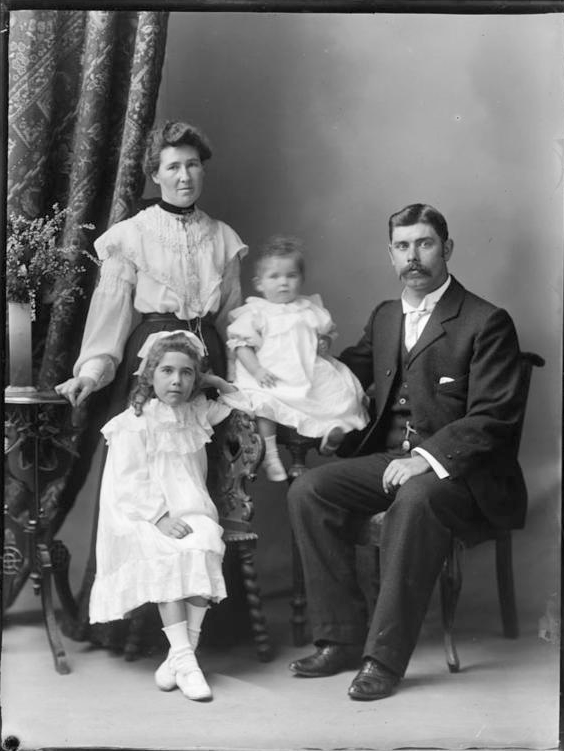
Nelson Provincial Museum: Joseph Edward Clear and family c.1902
Kawali Island Industries
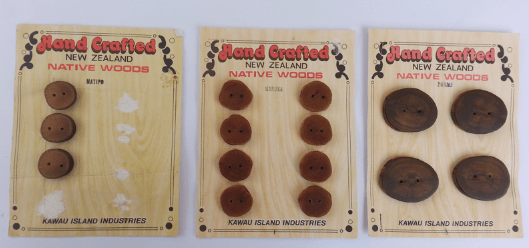
Matipo,Manuka and Puriaj wood.
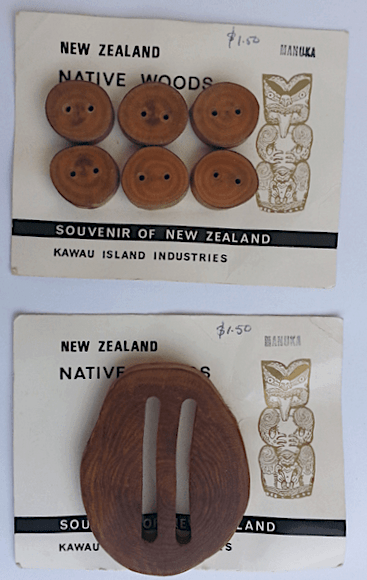
Kawau Island lies in the Hauraki Gulf off the north Eastern coast of New Zealand. It is approximately 8×5 km. Ten percent of the Island is under control of the Department of Conservation, including an historical mansion and the remains of a copper mine. Considerable damage has been done to the environment due to introduced species, particularly wallabies. A trust is working to reverse some of this damage. The wooden buttons may be tourist or perhaps fundraising items.
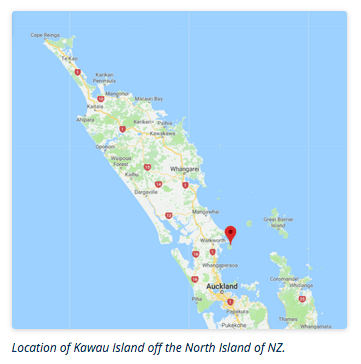
Korbond Industries Pty. Ltd.
See also the Distributors page. Korbond Industries Limited started as manufacturers, but changed over to distribution. As Korbond was located in Auckland, the buttons may have been supplied by Falcon Plastics of the same city.

These two cards are marked ‘made in NZ’.
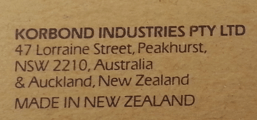
New Zealand Clothing Factory (Hallenstein Brothers), Dunedin
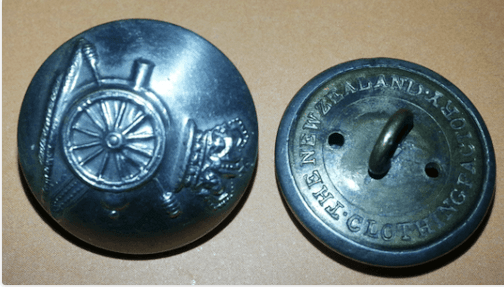
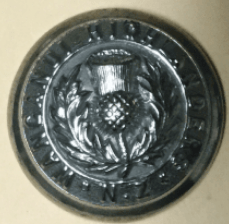
Wanganui Highlanders 1900
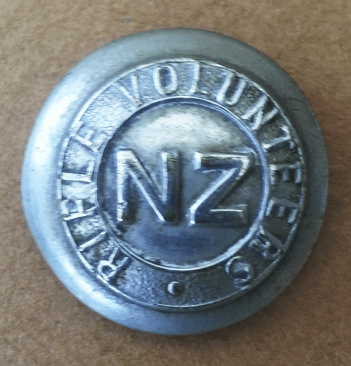
1885 pattern New Zealand Rifle Volunteers button.
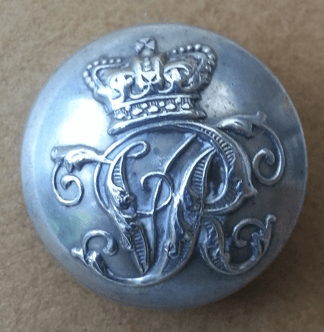
Other Ranks Volunteer button 1870s
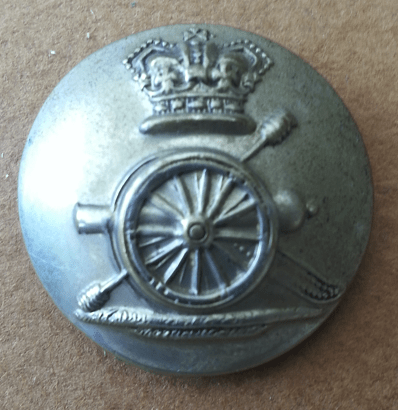
Artillery Volunteers 1870s.
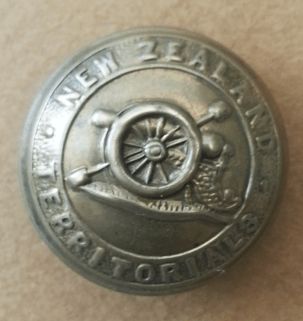
New Zealand Territorials Artillery, 1911.
In 1873 The New Zealand Clothing Factory was established in Dunedin to supply the Hallenstein Brothers clothing stores. By 1900 there were 30 “HB” clothing stores across the country. A grand new headquarters was built in 1882-3 which housed up to 300 employees. The opening was celebrated with a ball for 500-600 people. The company continues today, but now most of the clothing is made in China.
The factory must have regularly tendered to supply uniforms, as I have received several backmarked “The New Zealand Clothing Factory”, although the buttons were most likely sourced from England. Some are generic patterns used by multiple forces throughout the Empire.
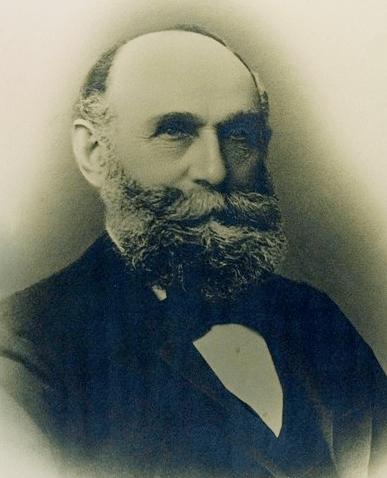
Founder Bendix Hallenstein (1835-1905) : Image courtesy of Toitū Otago Settlers Museum.
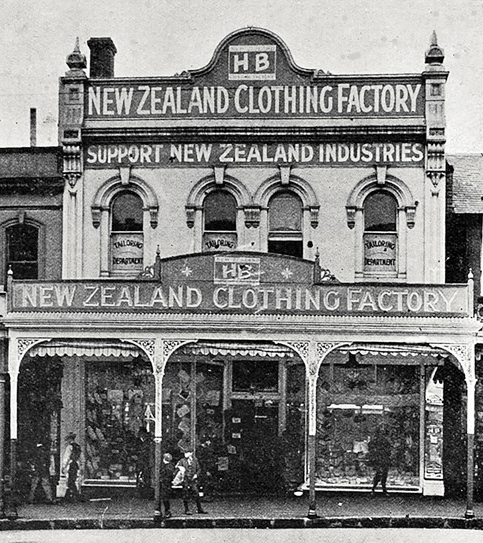
The Hallenstein Brothers New Zealand Clothing Factory store in Queen Street, 1903. Image from Auckland Weekly News 12 November 1903, courtesy of Sir George Grey Special Collections, Auckland Libraries, AWNS-19031112-15-1.
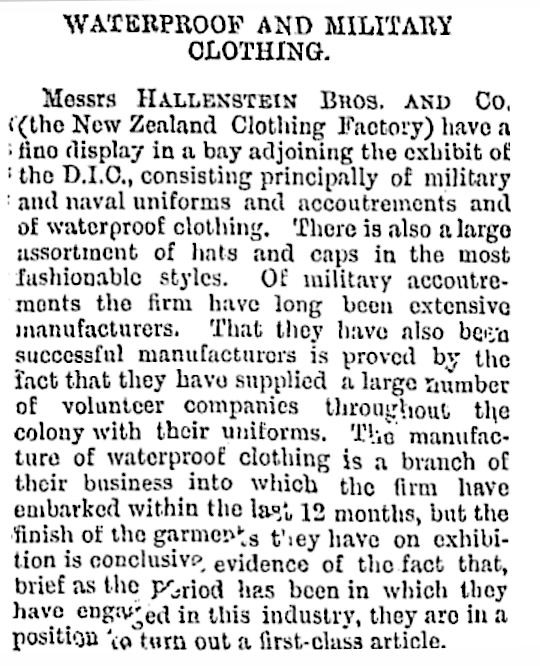
Otago Daily Times, 15th April 1890.
Ross & Glendining, Dunedin
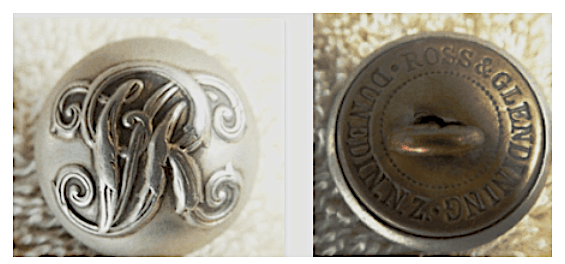
In August 1862 two Scotsmen, John Ross and Robert Glendining, took over a drapery store in Dunedin. It was the start of a business that would last until 1966. They changed from retail drapery to wholesale and importing when they opened a warehouse in 1865.
By the 1900’s over 500 people were employed at the mill. The business changed from a partnership to a Limited company. John Ross remained involved in the company until the 1920’s, and his sons continued after that. The number of factories increased producing clothes and shoes under various fashion labels. In the 1960s the firm struggled, finally being sold and broken up after over a century of trading in 1966. The mill continued under new ownership until 1980.

NZ Truth, 30th December 1922 page 3.
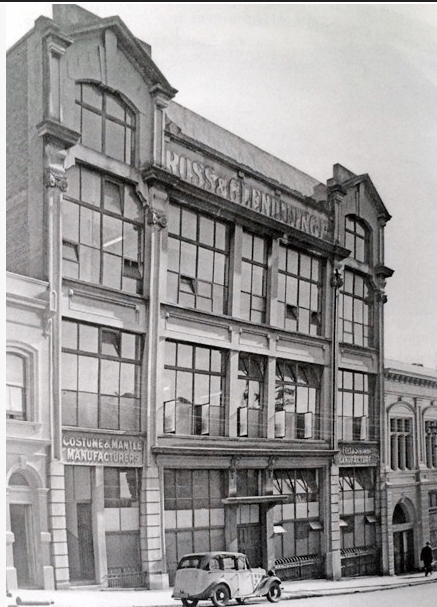
Ross & Glendining’s first clothing factory was initially equipped with 21 new and second-hand sewing machines. Photo from 1902 courtesy of Hocken Collections, Dunedin, S09-529c.
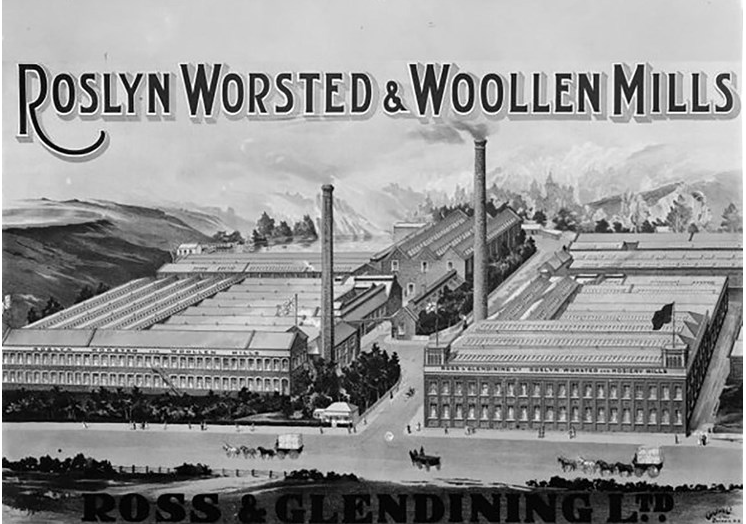
This lithograph, dated 1910, depicts the Roslyn Worsted and Woollen Mills in Dunedin. Image from Alexander Turnbull Library, Ref: 1/1-009178-G. Image © unknown.
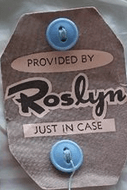
Van Staveren, Wellington

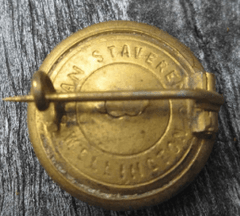
In Wellington the name of van Staveren was well known. Herman van Steveren (1849-1930) was the Rabbi of Wellington from 1877 until his death. He was very active in the community, serving on charitable and hospital boards. Three of his sons (out of 13 children) opened Van Staveren Bros. Limited in 1905 as general traders and importers. The firm finally closed in the 1980’s.
As merchants rather than tailors, they must have been involved in the supply of of soldiers’ uniforms. As 4 sons volunteered in WW1, the family was obviously proud to contribute.
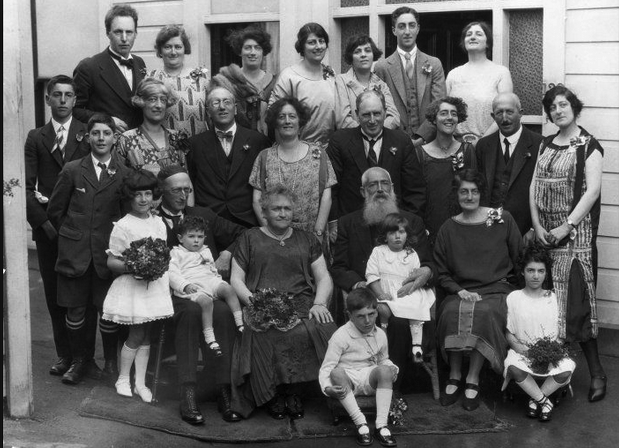
Rabbi Herman van Staveren, wife Miriam with children and grandchildren c.1925
The Wellington Woollen Manufacturing Company, Limited.
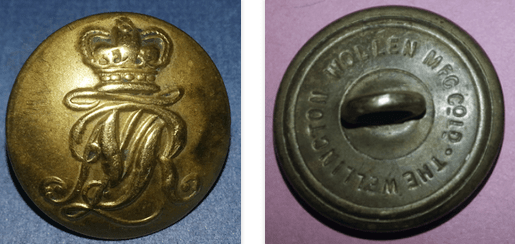
This company was incorporated in 1882 and commenced manufacturing in 1886. The head office, warehouse and clothing factory were situated in a three/four story brick building in Petone, near Wellington. The mills were also in Petone.
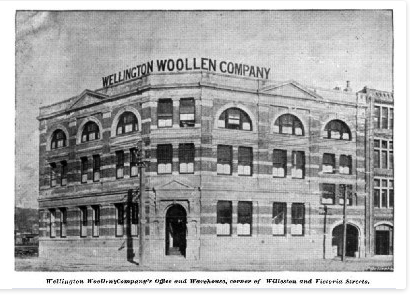
The Head Office, corner of Willeston and Victoria Streets, Petone.
Miscellaneous
Paua Shell


Paua is the Maori name for several species of sea-snail, known elsewhere as abalone.
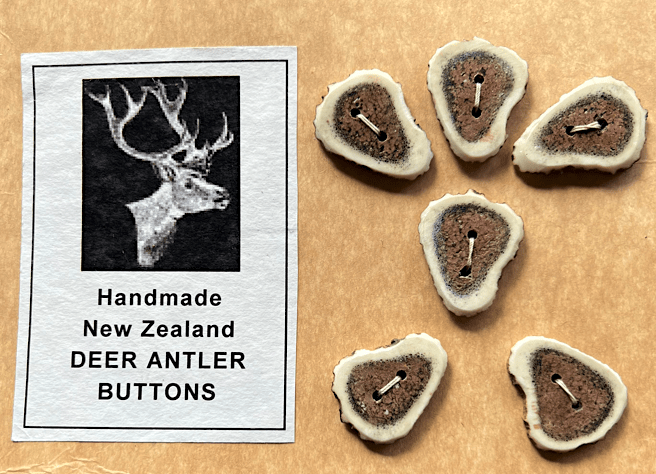
Sweetheart brooches
Items such as this, made from 3 uniform buttons, were bought or made as a gift for a sweetheart, wife or mother to wear whilst her boy served overseas.
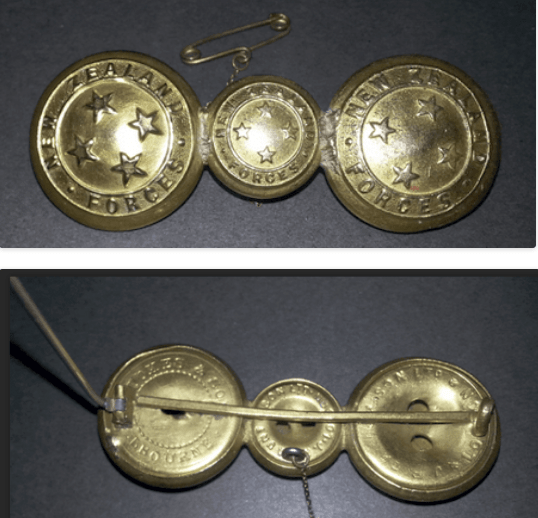
Uniform buttons
Civilian Uniforms
Airways of New Zealand
Established in 1935 by the shipping company Union Steamship Co (see http://www.austbuttonhistory.com/new-zealand-button-history/#Union_Steam_Ship_Co) , Union Airways of New Zealand was the first major airline in the country. The first scheduled flight took place in January 1936. They used de Havialland DH86 and Lockheed Electra aircraft.
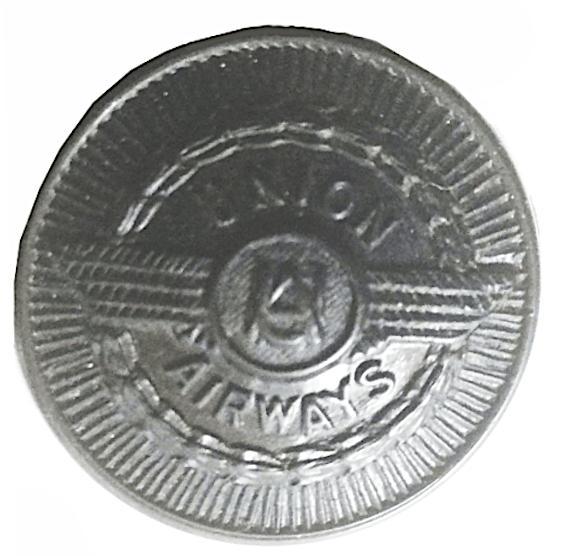
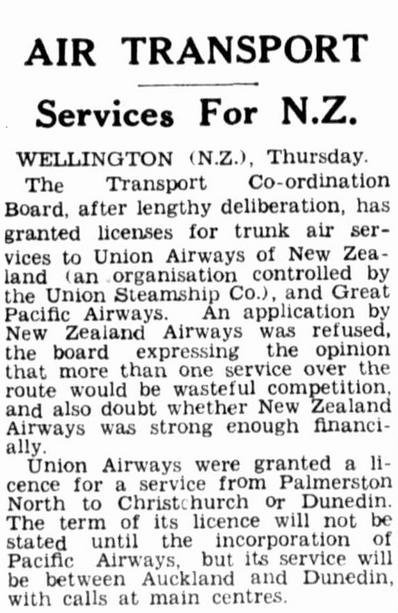
The Sun (Sydney), 11th April 1935 page 22.
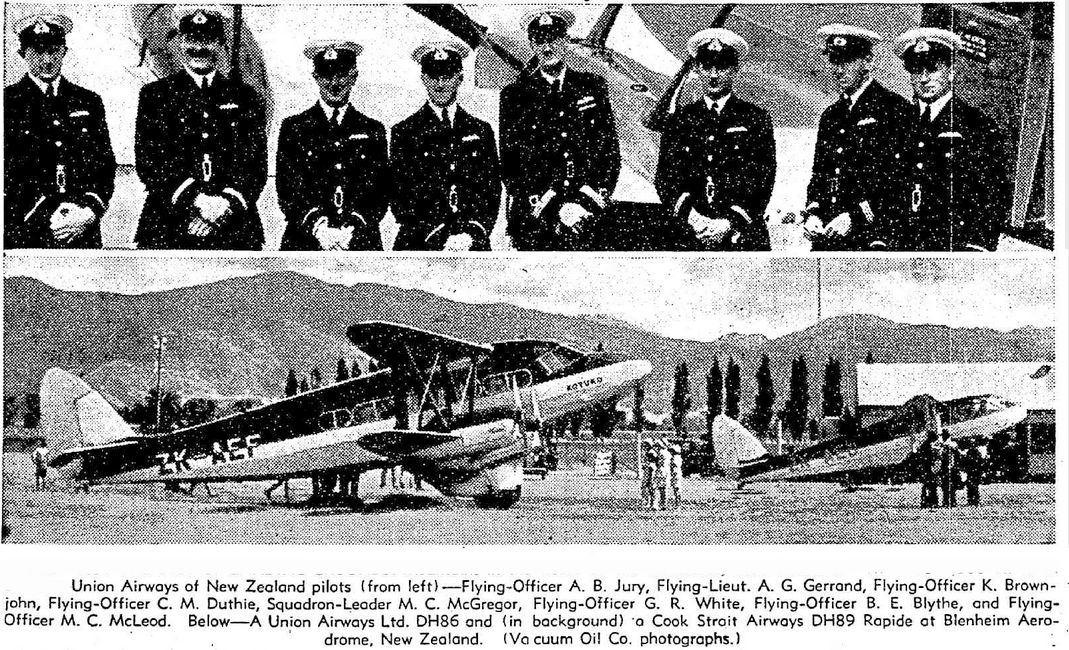
News (Adelaide), 15th February 1936 page 8.
In 1938 the East Coast Airways Ltd., (which had been the first licensed passenger service in NZ in 1935) was merged with Union. After a prolonged negotiation, a trans-Tasman service was established in April 1940 under the control of the Australian, New Zealand and British governments, as well as Qantas, Imperial, and Union Airways (19% share), using Empire flying boats. It was called the Tasman Empire Airways Ltd. (TEAL)

Tasman Empire Airways Limited. Uniform Button [Teal], 2004.452.15. The Museum of Transport and Technology (MOTAT).
Post WW2 the New Zealand government nationalised the airline, with the general manager of Union transferring to the new corporation. The aircraft, timetables and most personnel were also transferred to the new National Airways Corporation.
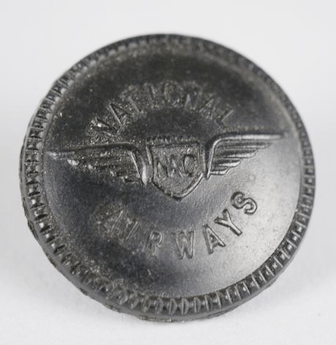
National Airways Corporation. Button [National Airways Corporation], 2016.187.2. The Museum of Transport and Technology (MOTAT).
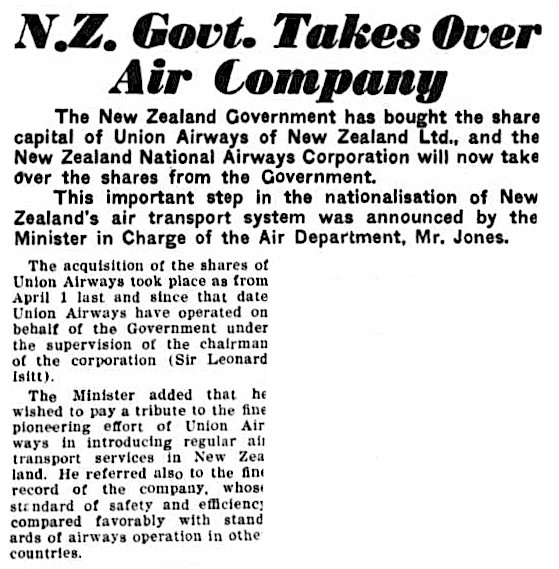
Labour Call (Melbourne), 29th August 1946 page 7.
In 1978 the N.A.C. merged with Air New Zealand.
Auckland Electric Tramway: 1902-1956.
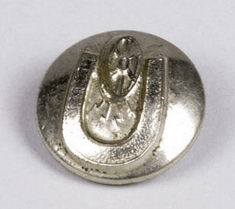
Item #2014.256. The Museum of Transport and Technology (MOTAT).
I love the design; a wheel, a giant magnet and bolts of electricity.
Allied Mutual Insurance (AMI)
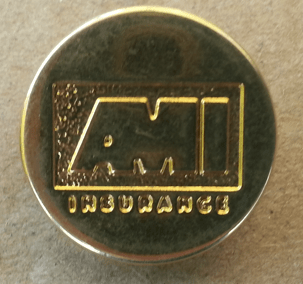
No maker’s mark.
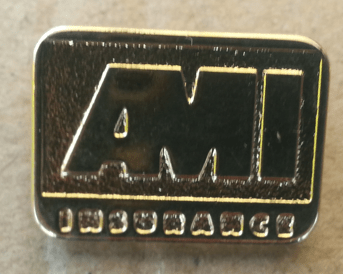

The logo as seen on the buttons was changed in 2018.
This company started in 1926 as the South Island Motor Union. Problems with finance post the 2010-11 Christchurch earthquakes led to the sale of this company. In 2020 it was announced that the remaining branches were to be phased out.
Christchurch Boys High School

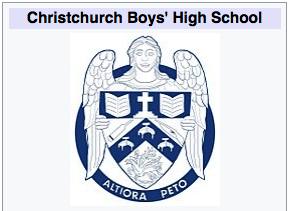
This is a school in Christchurch, New Zealand, opened in 1881, originally on the site of the (now) University of Canterbury, but moving to Straven Road in 1926.

The Press, 25th January 1881 page 2.
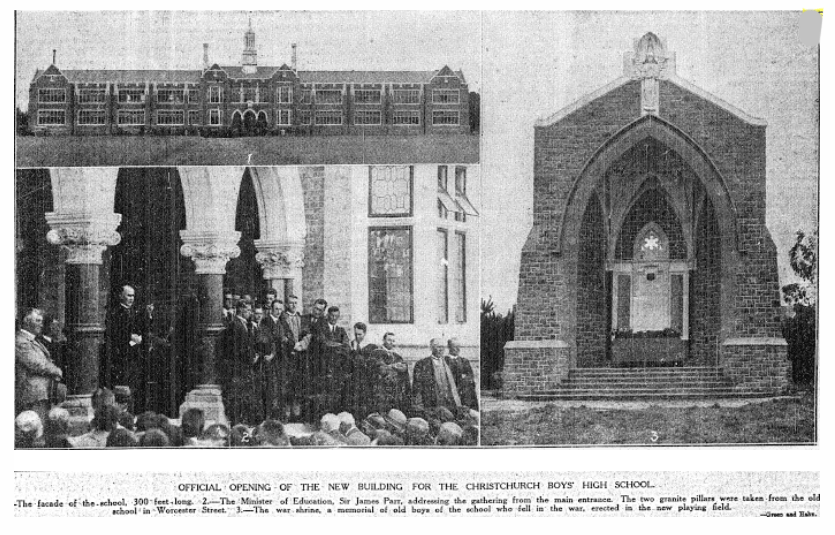
New Zealand Herald, 8th February 1926 page 11. Official opening of new school buildings.
Epsom Girls Grammar School, Auckland.
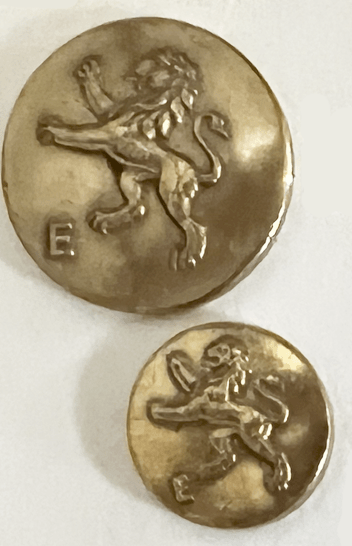
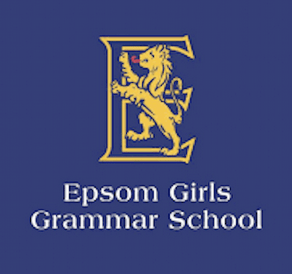
Epsom Girls Grammar was established in 1917. It caters for girls from years 9 to 13 and offers boarding.
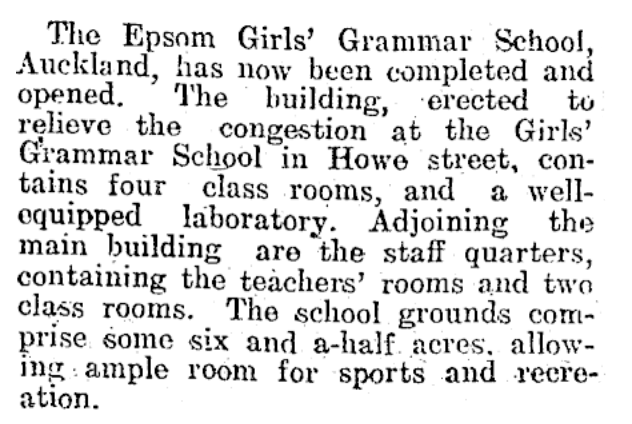
The Colonist (NZ), 14th February 1917 page 4.
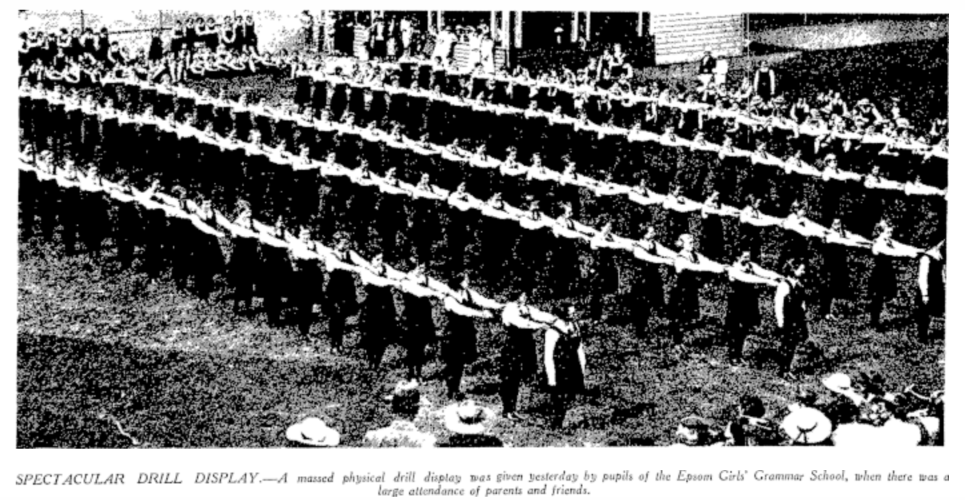
Auckland Star , 10th December 1936 page 9. A massed physical drill display. Oh, how exciting!

New Zealand Herald, 10th December 1943 page 5. Prize-giving at Epsom Girls grammar.
Nelson College for Girls
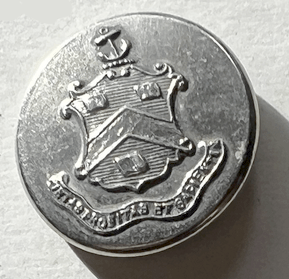
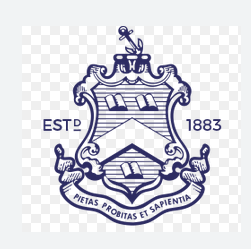
Nelson College for Girls was established in 1883. It is a private school that offers boarding.
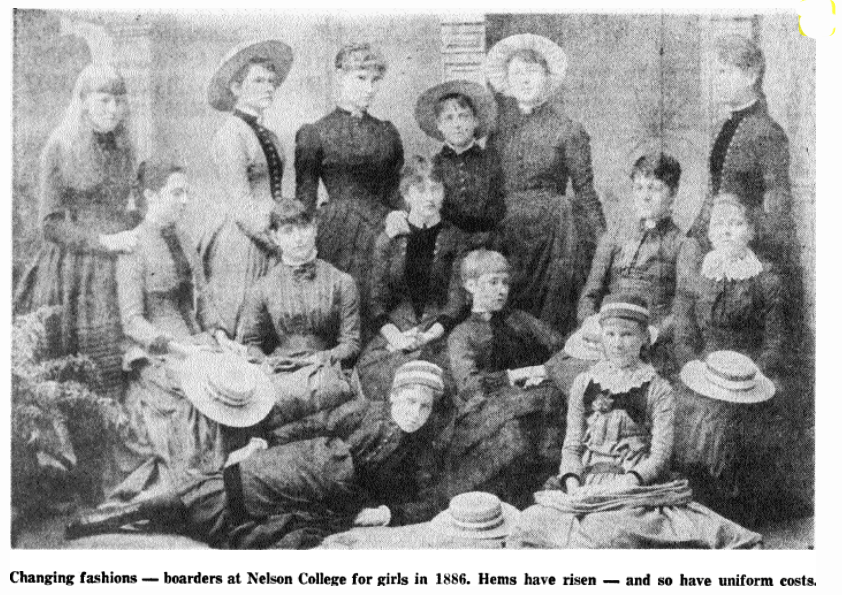
Press, 17th December 1976 page 13.
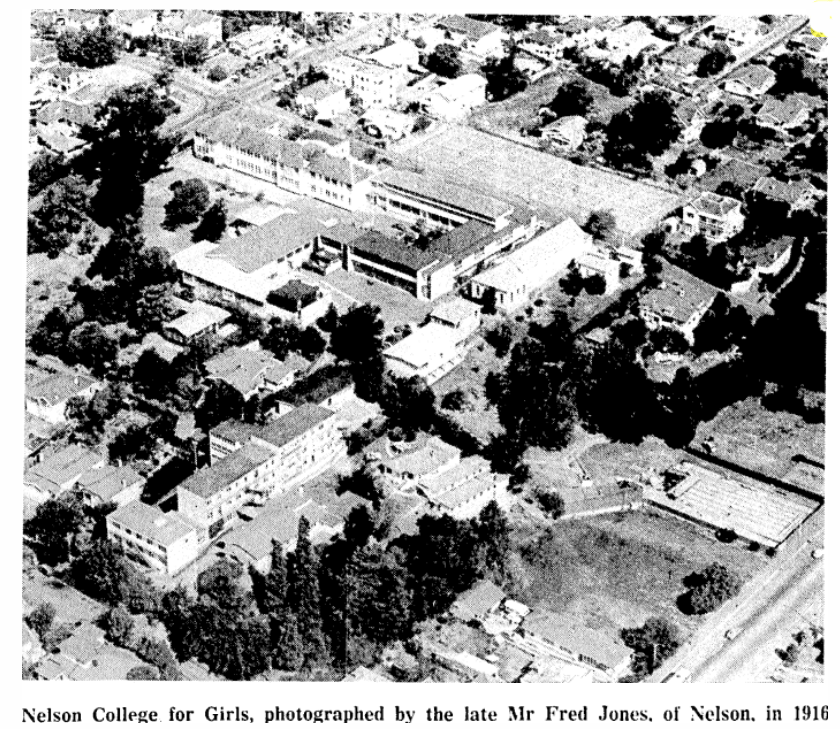
Press, 21st February 1983 page 14.
The school has ties with Nelson College, established in 1856; the oldest state secondary school in New Zealand. It is a boys only school from years 7 to 10, with boarding provided.
New Zealand Government Service
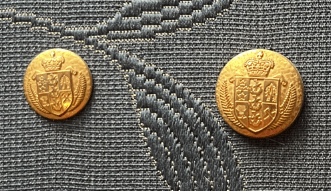
These New Zealand government service (eg parliamentary, officials, etc) buttons show the country’s coat of arms.
New Zealand Shipping Co.
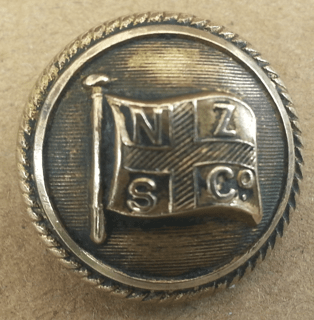
Backmark: Gardiner & Co. London
Businessmen in Christchurch started this shipping company in late 1872 to run passenger and cargo services between New Zealand and Great Britain. In 1882 their ships were fitted with refrigeration to allow the shipping of frozen meat from New Zealand.
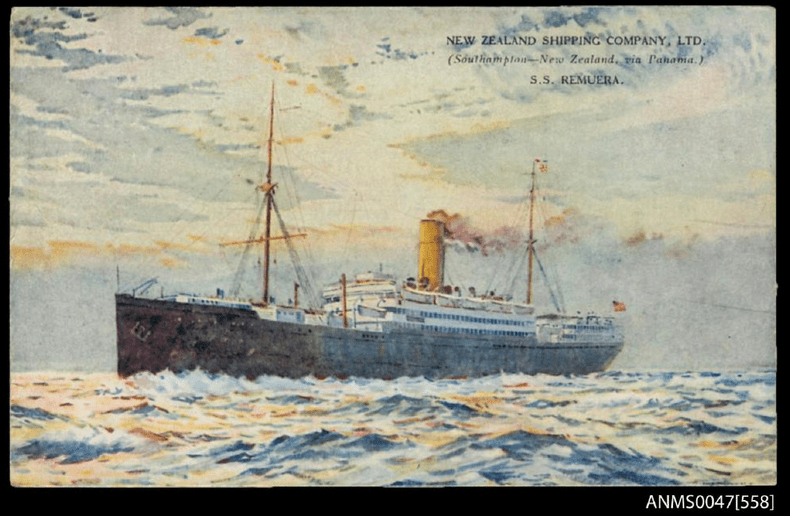
From the Australian National maritime Museum: SS Remuera 1911-1940
NB: There were similarly named, but unconnected, companies named ‘Forth and New Zealand Shipping Company’ in 1863-4 and ‘Panama and New Zealand Steamship Company” in 1866-8.
See also http://www.austbuttonhistory.com/uncategorized/19th-november-2020/
Port Chalmers Marine Labourers Union
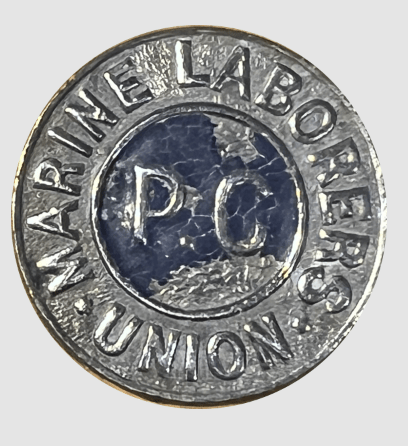
Backmark: 74 (whatever that stands for?)
The union formed around 1907. In 1913 it had a membership of around 250 workers, and was affiliated with the Federation of Labour. It was still in existance in 1952.
Union Steam Ship Co.

Stokes & Sons

Stokes & Sons Melbourne
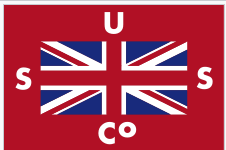
Formed in Dunedin in 1875 by James Mills from the Harbour Steam Company of his deceased boss. With a growing fleet of modern ships, and by taking over smaller concerns, the firm prospered. By 1877 it started trading between New Zealand and Australia, and by further acquisitions, including the Tasmanian Steam Navigation Co., came to dominate the trans-Tasman and Bass Strait trade. It extended to Pacific, trans-pacific, Asian routes and also to Britain. In 1917 Mills sold the line to P&O. This turned out very well for P&O as they secretly over many years, pulled profits out of the firm to prop up less profitable parts of its business.
In 1971 P&O sold Union off to a consortium including Thomas Nationwide Transport (TNT). Its services were reduced to concentrate on Tasman trade, reducing the company’s scope, then competition would further reduce profitability. Sadly, the once extensive and profitable firm ceased trading in 2000, after 125 years.
United Fire Brigades’ Association of New Zealand.
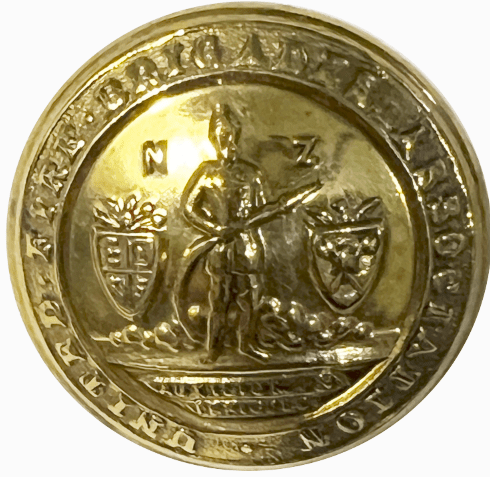
Backmark: E. Stillwell & Son London.
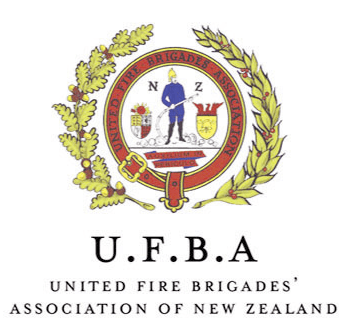
According to the Encyclopedia of NZ: “Its crest is framed by English oak leaves on the left and the New Zealand southern rātā on the right. To the left of the fire fighter is the British coat of arms, an indication of the origins of most volunteers at the time. The coat of arms on the right incorporates a fireman’s helmet and crossed axes, with the legendary bird, the phoenix, rising out of the ashes of destruction.” (Nancy Swarbrick, ‘Fires and fire services – Early fire services’, Te Ara – the Encyclopedia of New Zealand, http://www.TeAra.govt.nz/en/ephemera/21864/united-fire-brigades-crest ). It was founded in December 1878 by nine brigades.
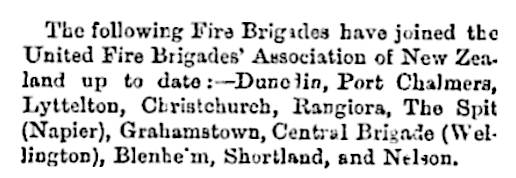
The Otagom Daily Times, 7th April 1879 page 2.

Otago Witness, 21st March 1917 page 32 (supplement).
University of Canterbury, Christchurch
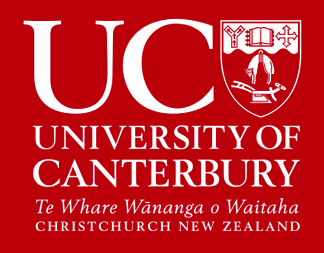
Founded in 1873 as Canterbury College, with the main campus in the suburb of Ilam. The name was changed in 1933 to Canterbury University College, then in 1957 to University of Canterbury. Women were allowed to be admitted to the college from its inspection. It was part of the University of New Zealand until 1961, then became an independent university in its own right. The University gradually moved from the centre of Canterbury to Ilam from 1961-1974. The original neo-gothic buildings are now used as the Christchurch Arts Centre.

The Argus (Melbourne), 16th February 1874 page 5.
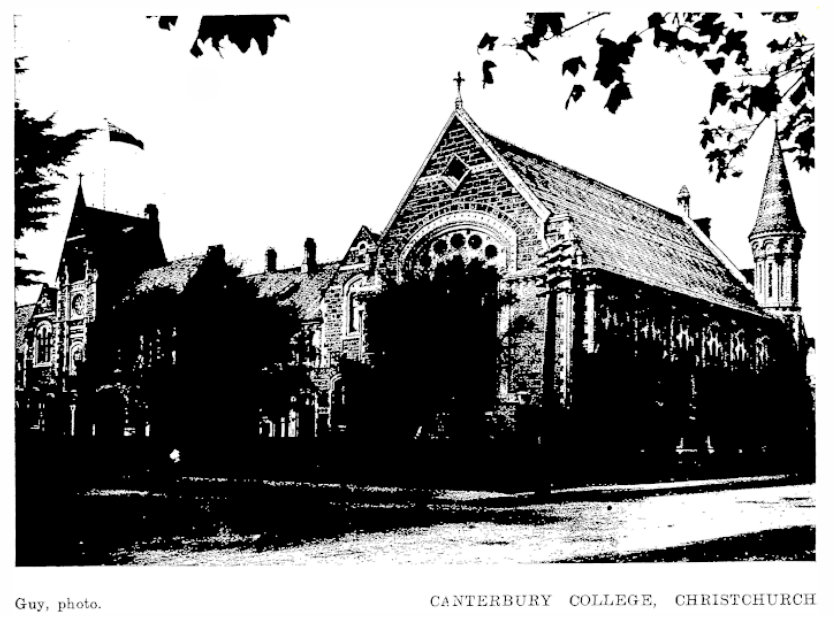
Otago Witness, 5th June 1901 page 38.

Press, 11th December 1957 page 9.

Press, 6th February 1960 page 14. The circular theatre of the new school of engineering at the University.
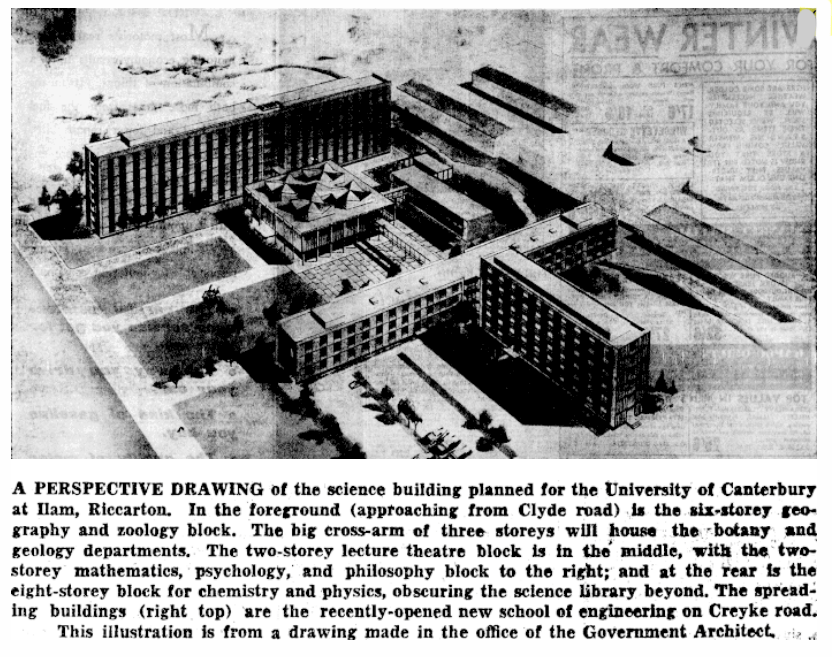
Press, 5th April 1960 page 14.
Defence Force Uniforms
See also above in the section for the NZ Clothing Factory.
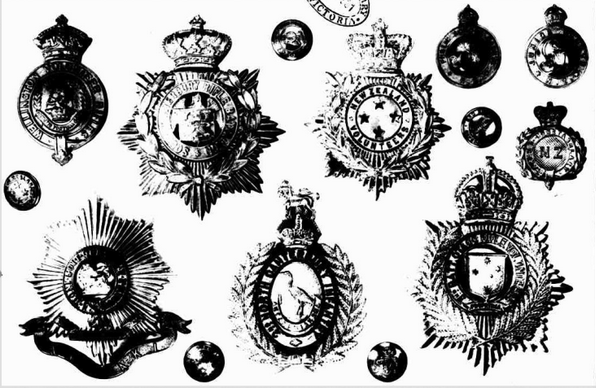
Published in The Queenslander, 14th May 1931, a collection of New Zealand Helmet and Hat badges and uniform buttons. These were mostly made in Britain with some made by Stokes & Sons in the 20th century.
1st NZ Special Air Service Regiment (1 NZSAS Regt)
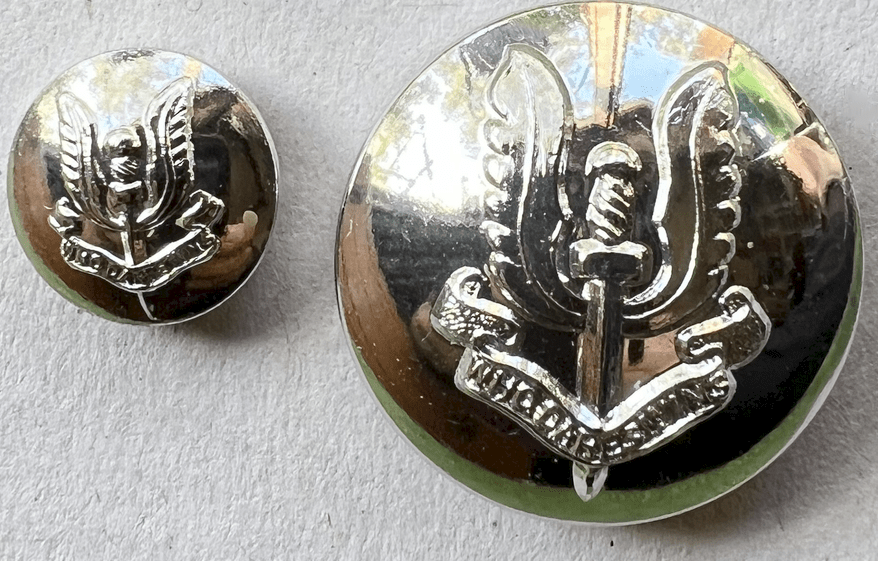
Backmark: Firmin London.
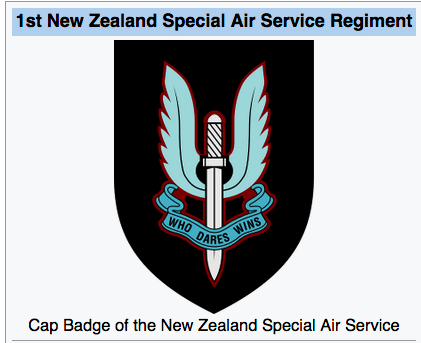
This unit was formed in 1955 and was modelled on the British SAS. it obtained regimental status in 2013. According to Wikipedia “It has the responsibility of conducting counter-terrorism and overseas special operations and performing the disposal of chemical, biological, radiological, nuclear, and explosive hazards for military and civilian authorities.”
New Zealand Army Education Corps
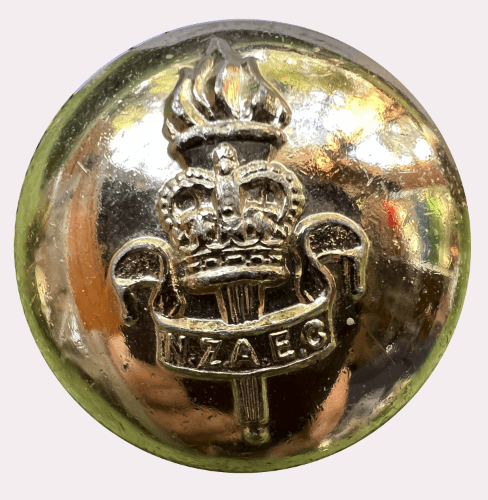
The Army Education and Welfare Service was established in 1942 to educate and to help servicemen integrate back into civilian life by offering library services and training courses. It became the New Zealand Army Education Corps in 1954, and received the Royal prefix in 1963.
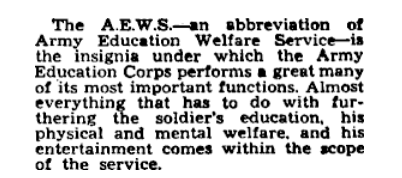
Press, 4th September 1956 page 9. From a long article. It described assessment of aptitudes, teaching of academic subjects, hobby sheds, library services, and entertainment.
New Zealand Army Veterinary Service: George V era
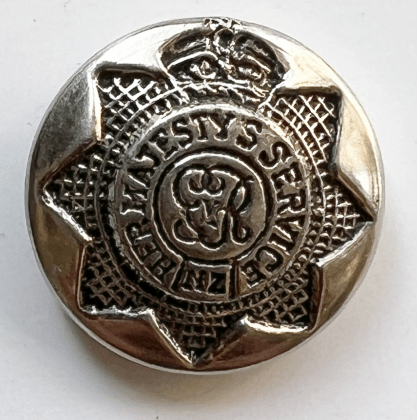
See https://nzhistory.govt.nz/war/medical-units/veterinary-corps
New Zealand Artillery

Backmark: J.R. Gaunt & Son Ltd. 1902-1952
On 15th October 1902 the previous small permanent artillery force was designation the RNZA. In 1947 the volunteer and permanent components of the artillery were combined to form the Regiment of New Zealand Artillery as part of the nation’s army, receiving the Royal title in 1958.
New Zealand Permanent Staff

According to Ian Kelly: 1921-1947.
This corps, formed in 1911, was part of the Permanent Forces, along with the New Zealand Staff Corps and the Permanent Regiment of the Royal New Zealand Artillery. In 1914, pre-war, the Permanent Forces had numbered 578 men. It was initially staffed by commissioning ex-Regular and Volunteer officers with cadets being trained at Duntroon. Numbers post war rose and fell along with the levels of funding available. As of May 1939 the numbers of Permanent Staff were 134. They were disbanded in 1947 following a reorganisation of New Zealand’s defence forces.
New Zealand Rifle Brigade
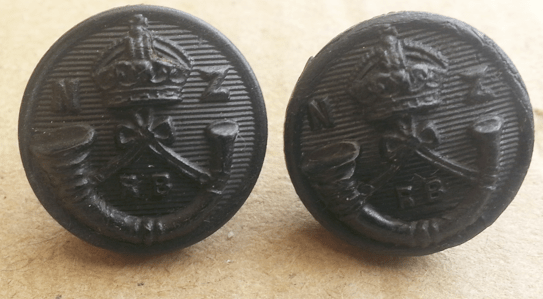
The New Zealand Rifle Brigade was raised in April 1915, becoming the 3rd New Zealand (Rifle) Brigade in January 1916. The Auckland museum has a set of them, but without the letters RB on the front.
New Zealand Staff Corps
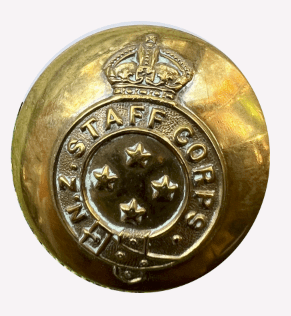
From 1911-1947 it provided professional administrative officers of the Territorial Forces (reservists). Many of the officers also served overseas during the wars.
New Zealand Women’s Royal Army Corps
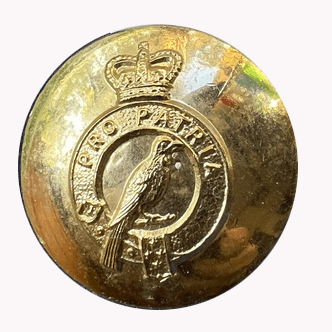
The button shows a Tui bird on a perch. The Tui is a “boisterous” NZ native honeyeater.
In 1940 the Women’s War Service Auxillary was formed. This was the forerunner of the Women’s Army Auxillary Corps formed in 1942, which in turn became the New Zealand Women’s Royal Army Corps in 1948, receiving the Royal prefix in 1952. it was disbanded in 1977, when women were allowed to serve along side men in the New Zealand military.
Royal New Zealand Airforce
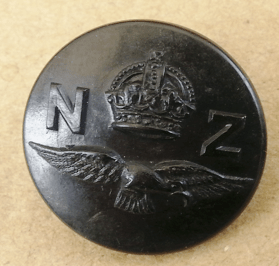
WW2 NZ Airforce. Backmark: MP
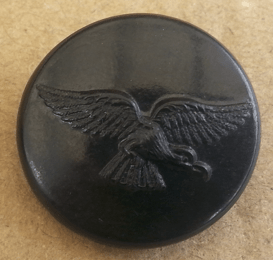
? Generic airforce button.
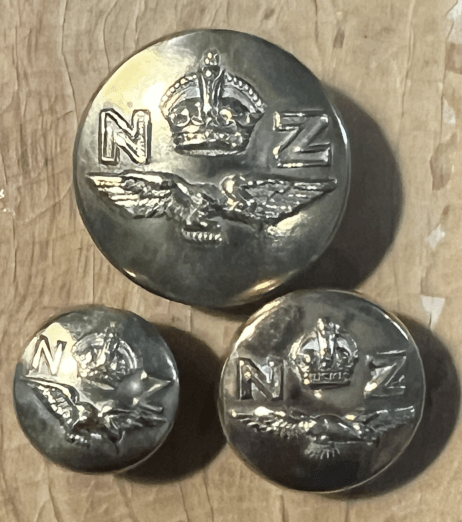
King’s Crown: 1934 -1952.
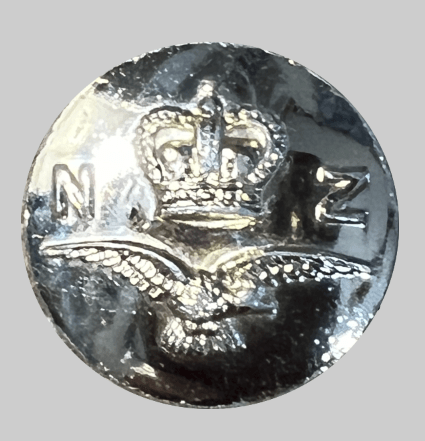
Queen’s Crown: 1953-2023
The New Zealand Permanent Airforce was gazetted in 1923 as part of the army. It was renamed the Royal New Zealand Air Force in 1934 and became an independent service in 1937.
Royal New Zealand Armoured Corps
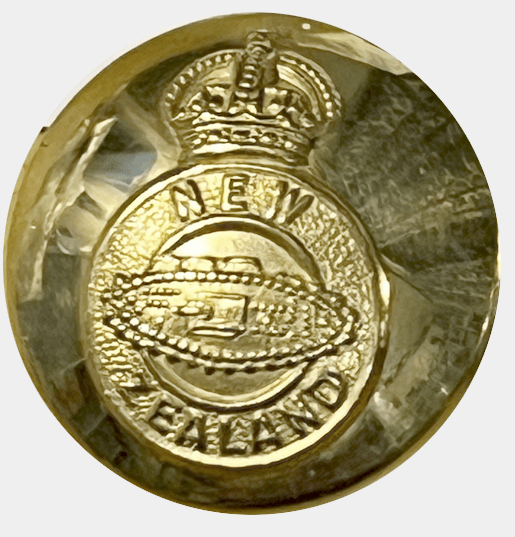
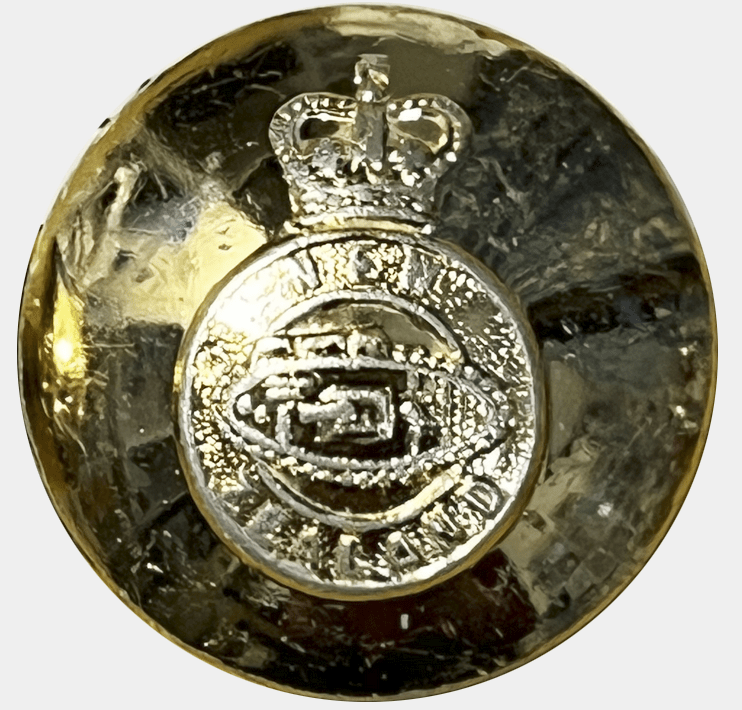
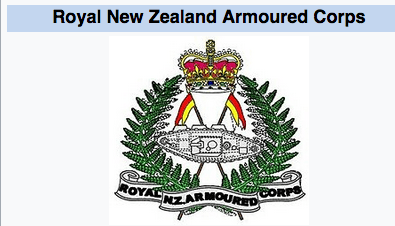
This was established in 1942, gaining the Royal prefix in 1947.
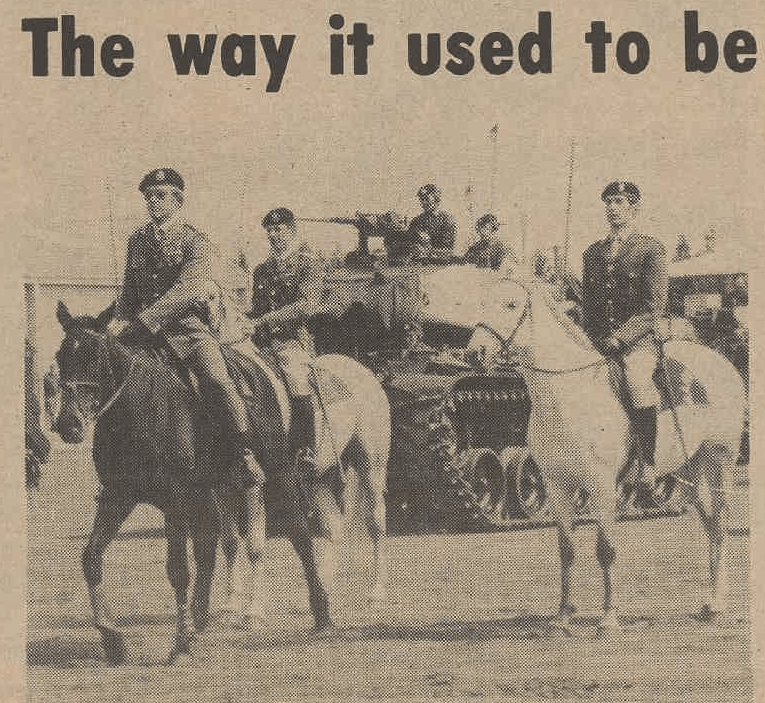
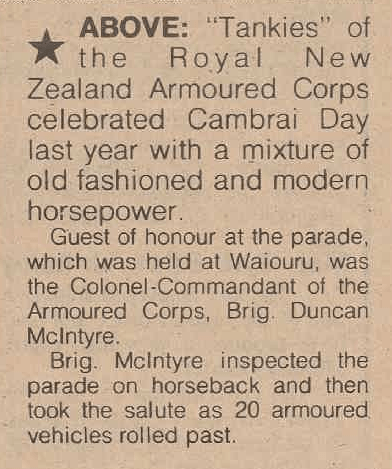
Australian Army newspaper, 20th January 1977 page 3.
Royal New Zealand Army Medical Corps
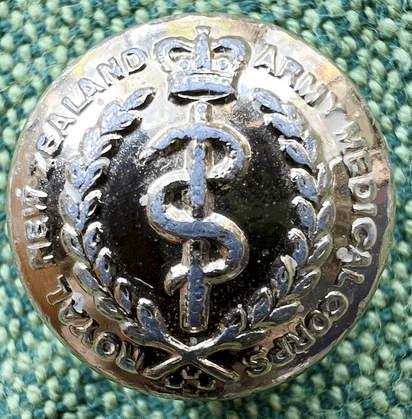
Royal New Zealand Electrical and Mechanical Engineers
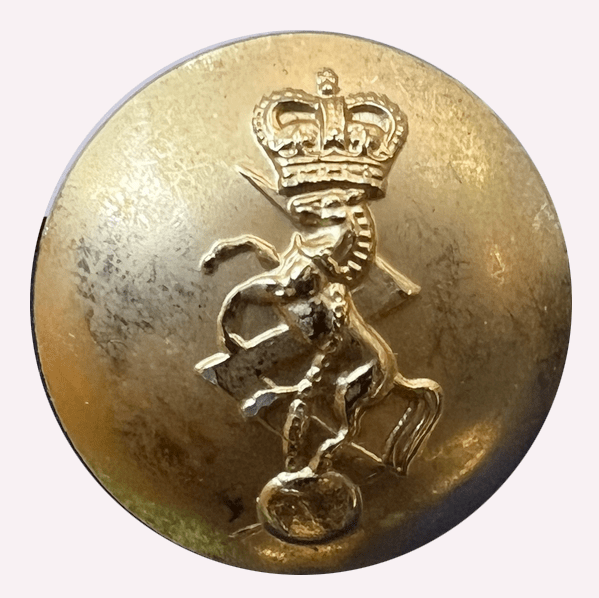
The New Zealand Electrical and Mechanical Engineers (RNZEME) took over duties from other units in 1946, receiving the Royal prefix in 1947. it was amalgamated along with the ordnance and transport corps into the RNZA Logistic Regiment in 1996.
Royal New Zealand Infantry Regiment
I apologise if I have the dating of the buttons incorrect. Please contact me if you know better!
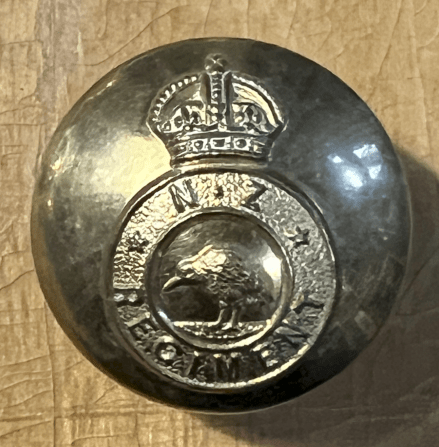
King’s Crown: 1947-1952
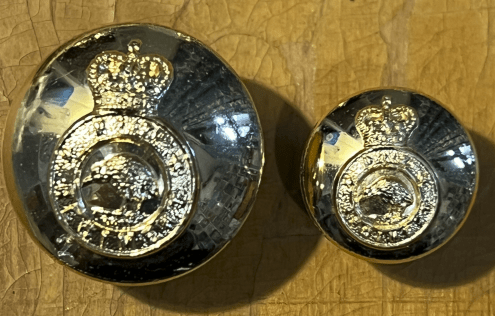
Queen’s Crown: 1953 -64
The Royal New Zealand Infantry Corps was raised in January 1947, receiving the Royal title in July that year.
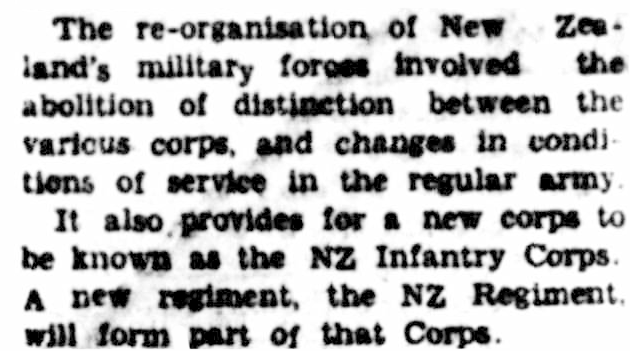
National Advocate (Bathurst, NSW), 18th January 1947 page 5.
The first “regular” infantry battalion was raised in 1957. In 1964 all of the infantry corps were re-designated as the Royal New Zealand Infantry Regiment.
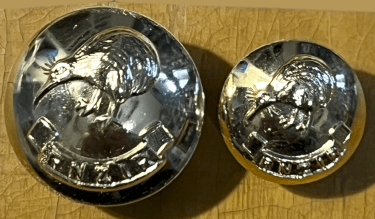
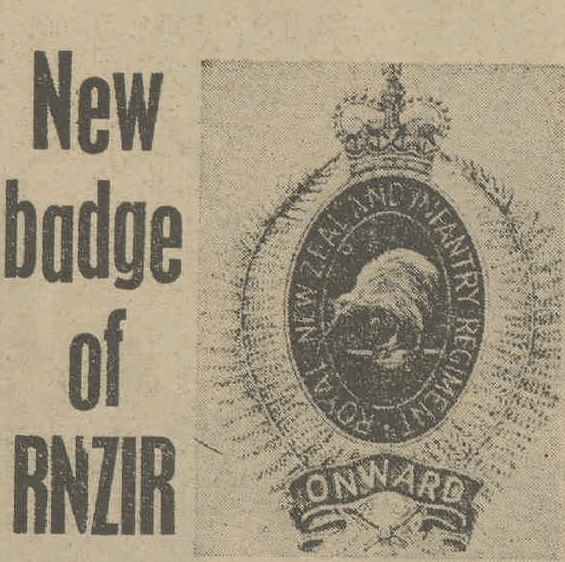

Australian Army newspaper, 5th March 1964 page 3.

Press, 26th November 1964 page 36.
Royal New Zealand Nursing Corps
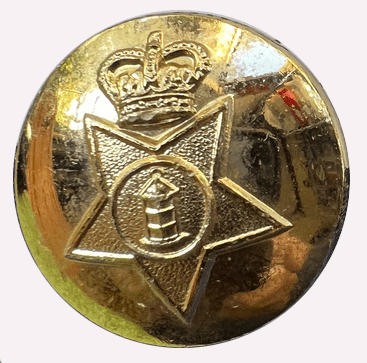
A Nursing Reserve was formed in 1908. The Corps formed in 1915 from civilian volunteer nurses. The lamp is probably meant to reference Florence Nightingale. Whilst the lamp she used was actually a Turkish fanoos, she is often depicted carrying a “genie lamp” (as on the Australian nursing button) or as depicted on this NZ button, and in a painting (unknown source: please let me know if you can) as seen below.
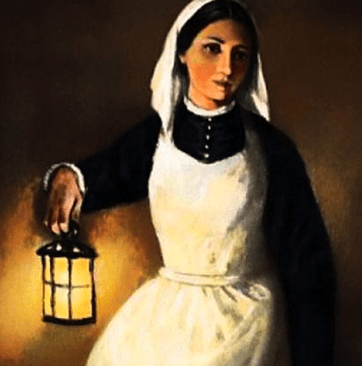
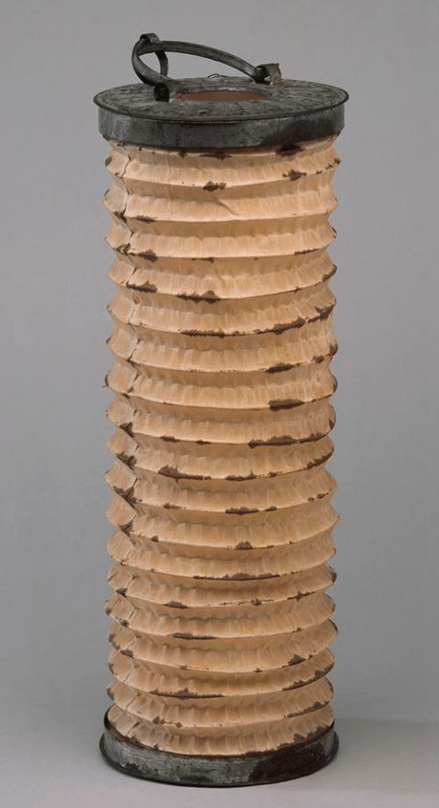
Left: National Army Museum: Florence’s fanoos, a paper lamp.

Dominion, 3rd April 1915, page 6.
The Corps is an officer only corps that works along with the medical and dental corps in health care. Until 1945 it was only a part-time formation, except during periods of war.

